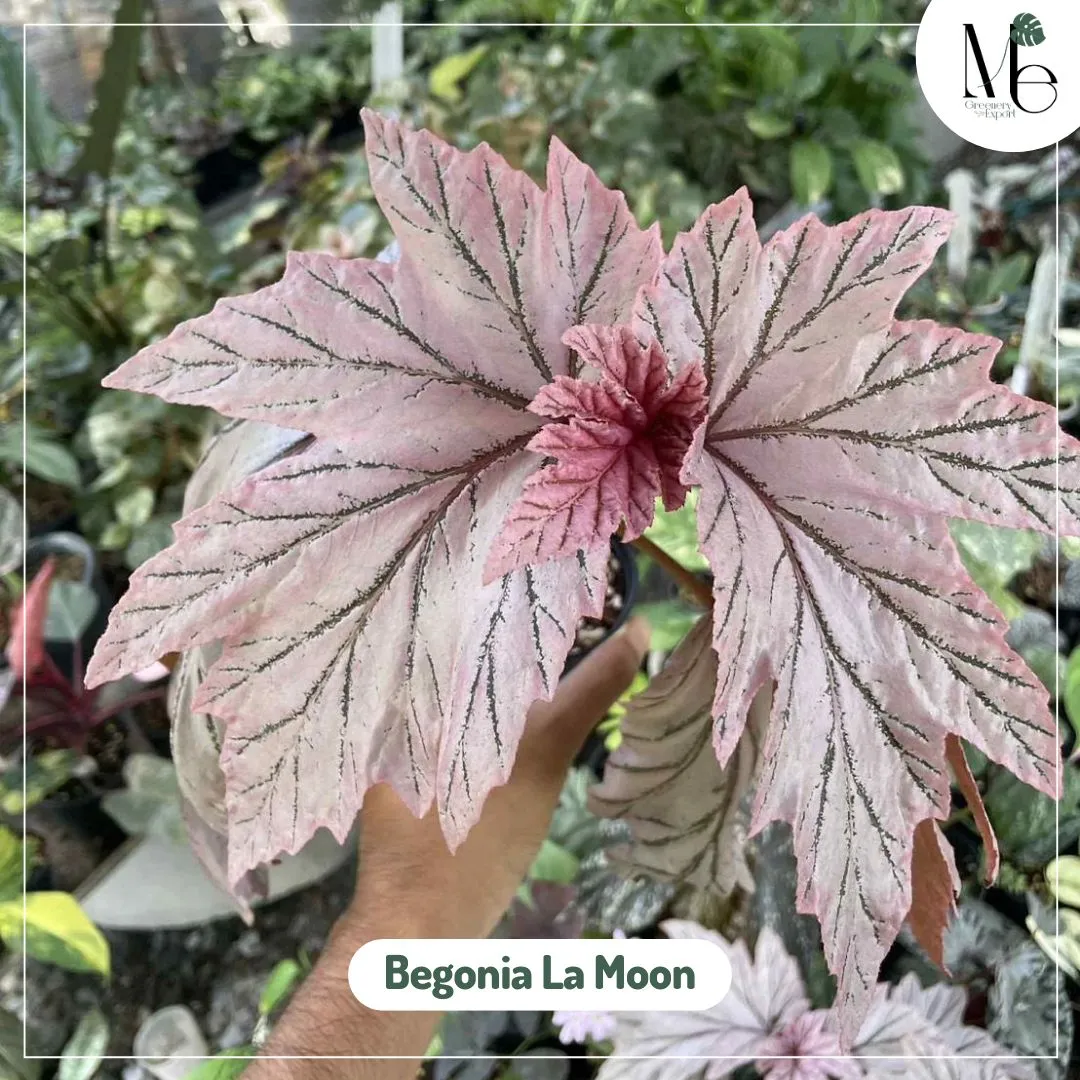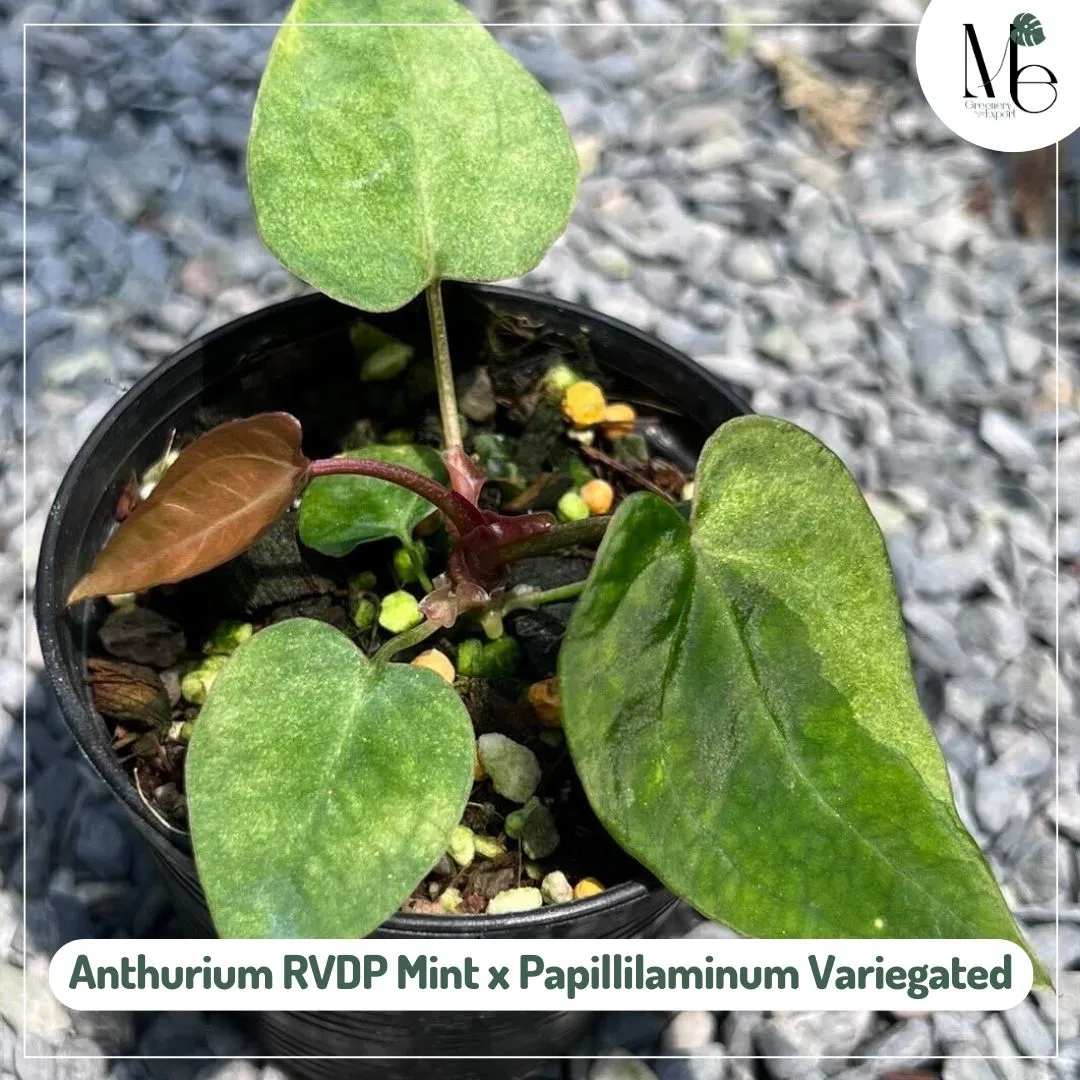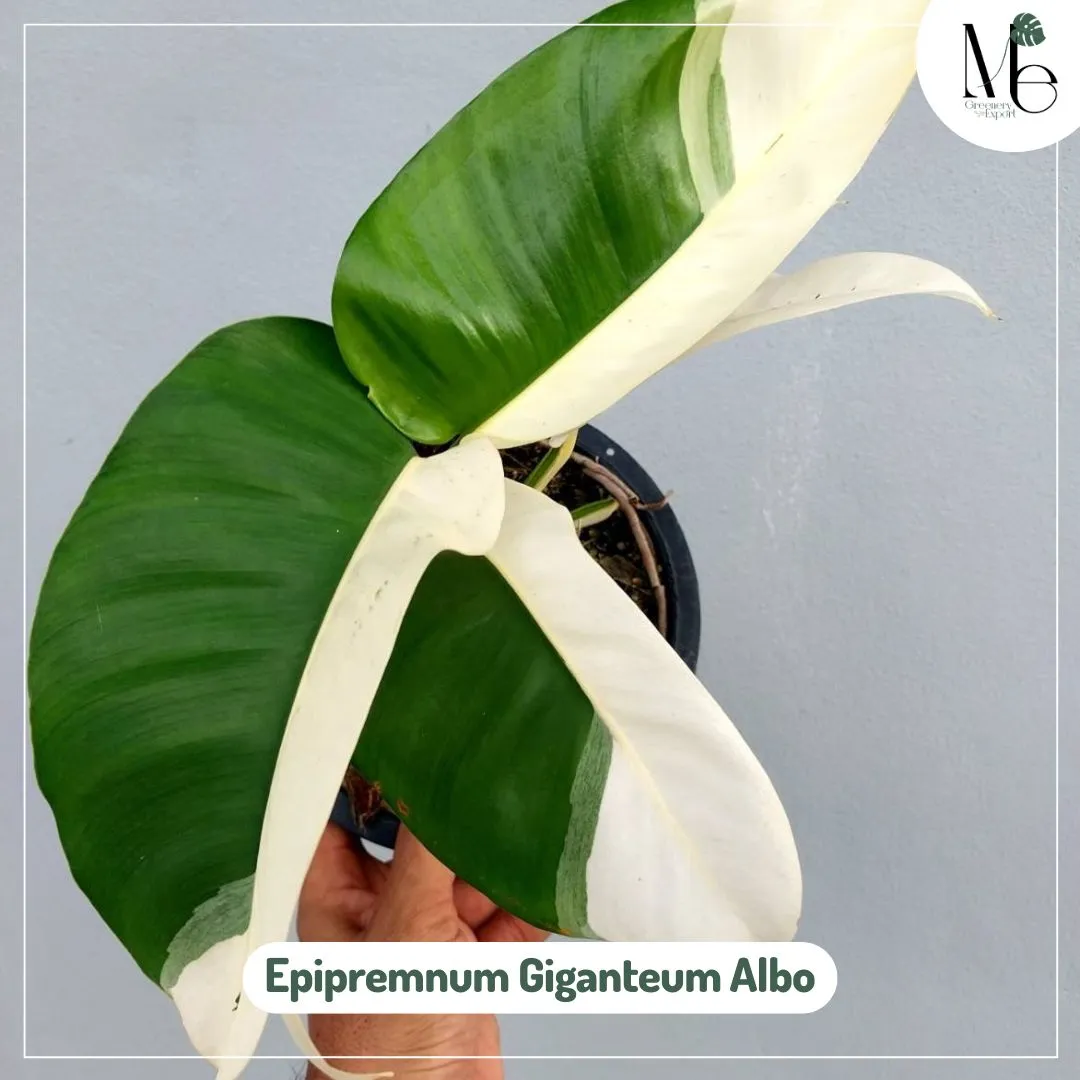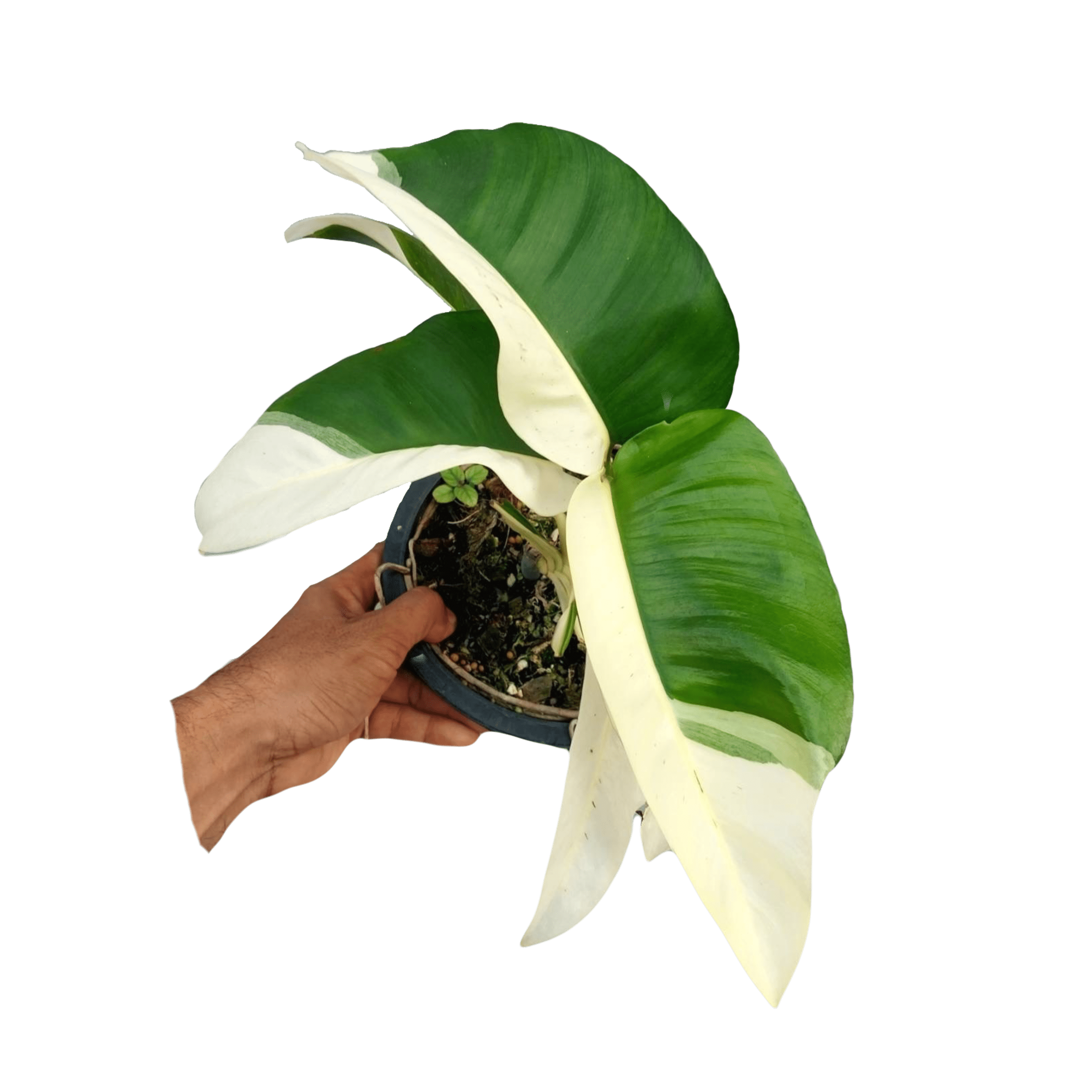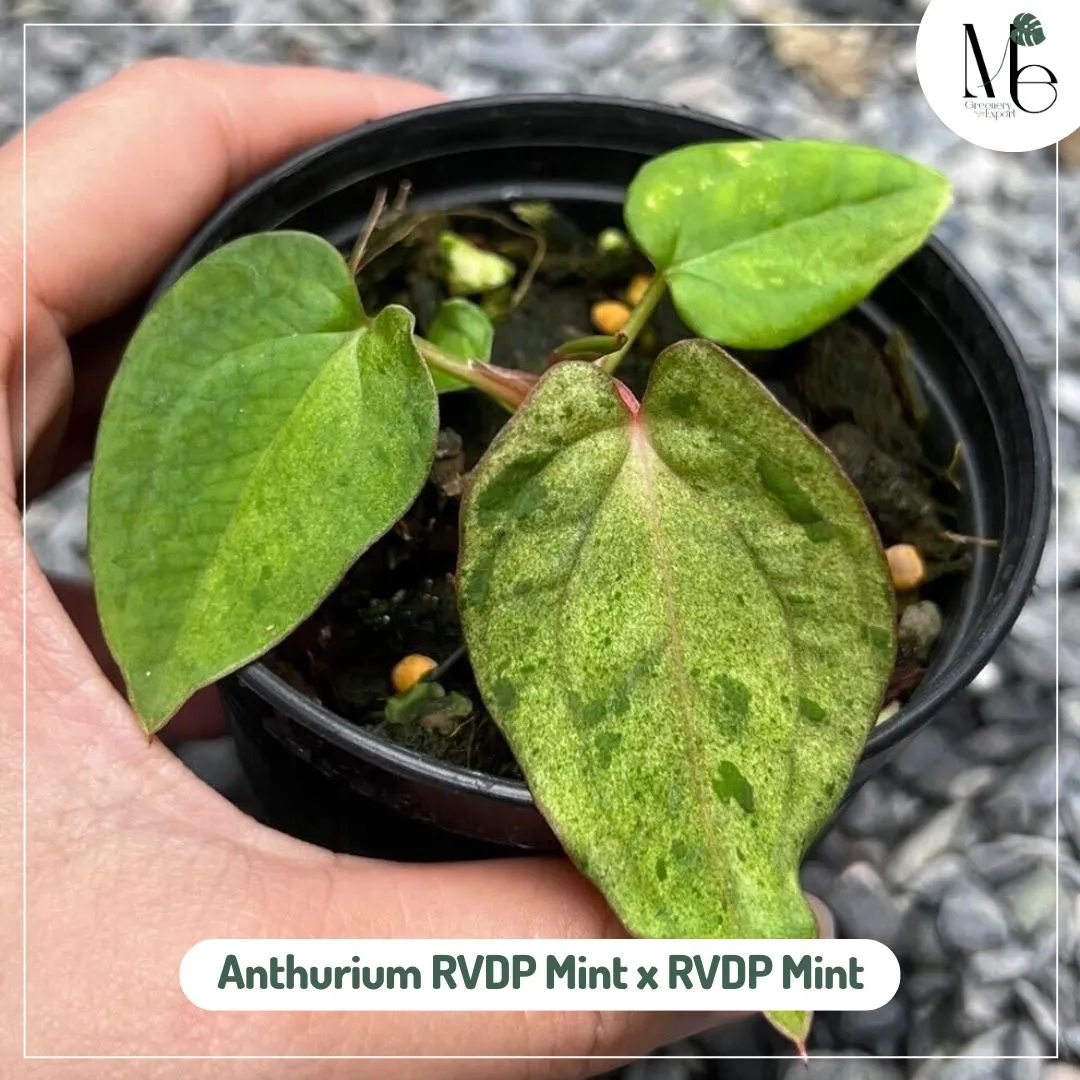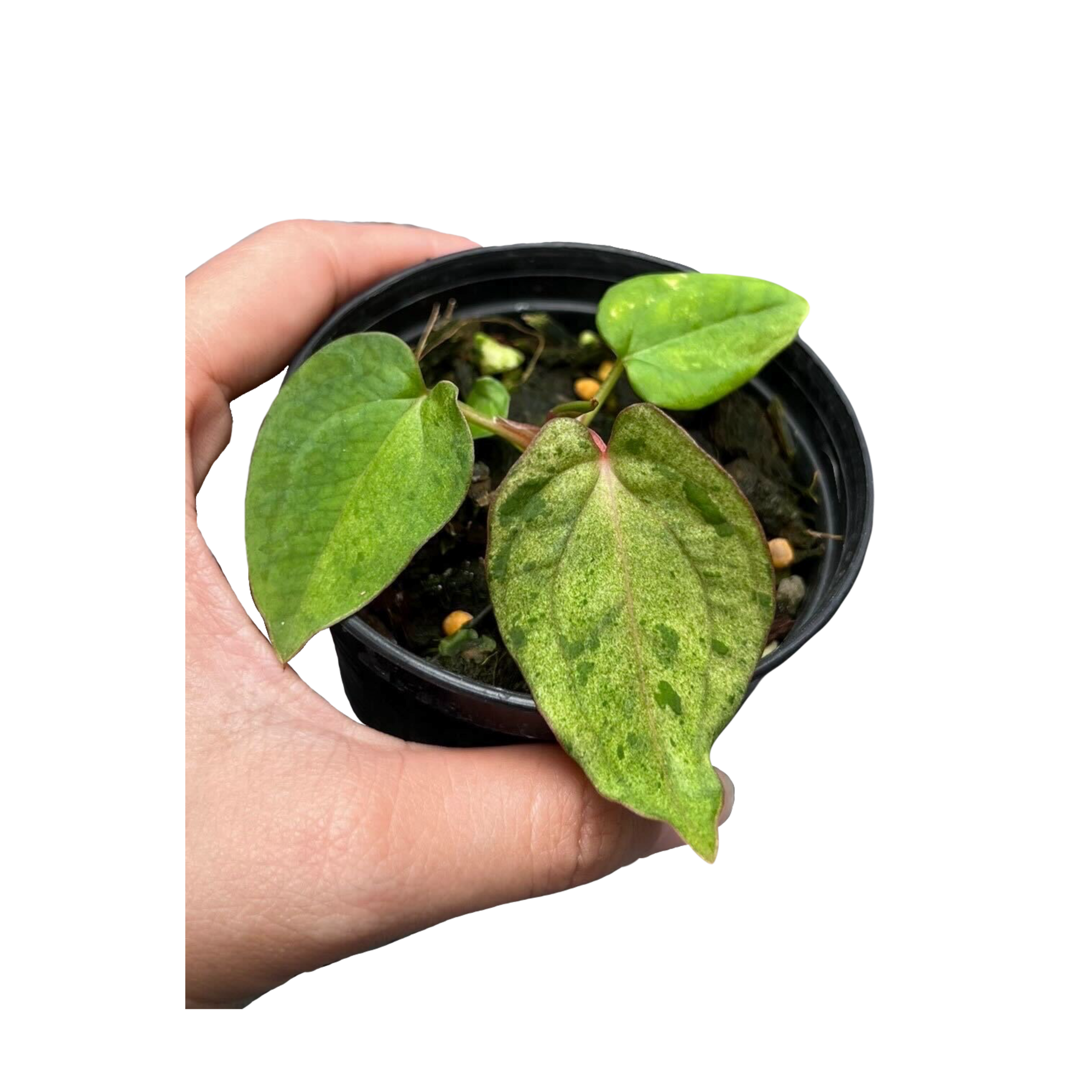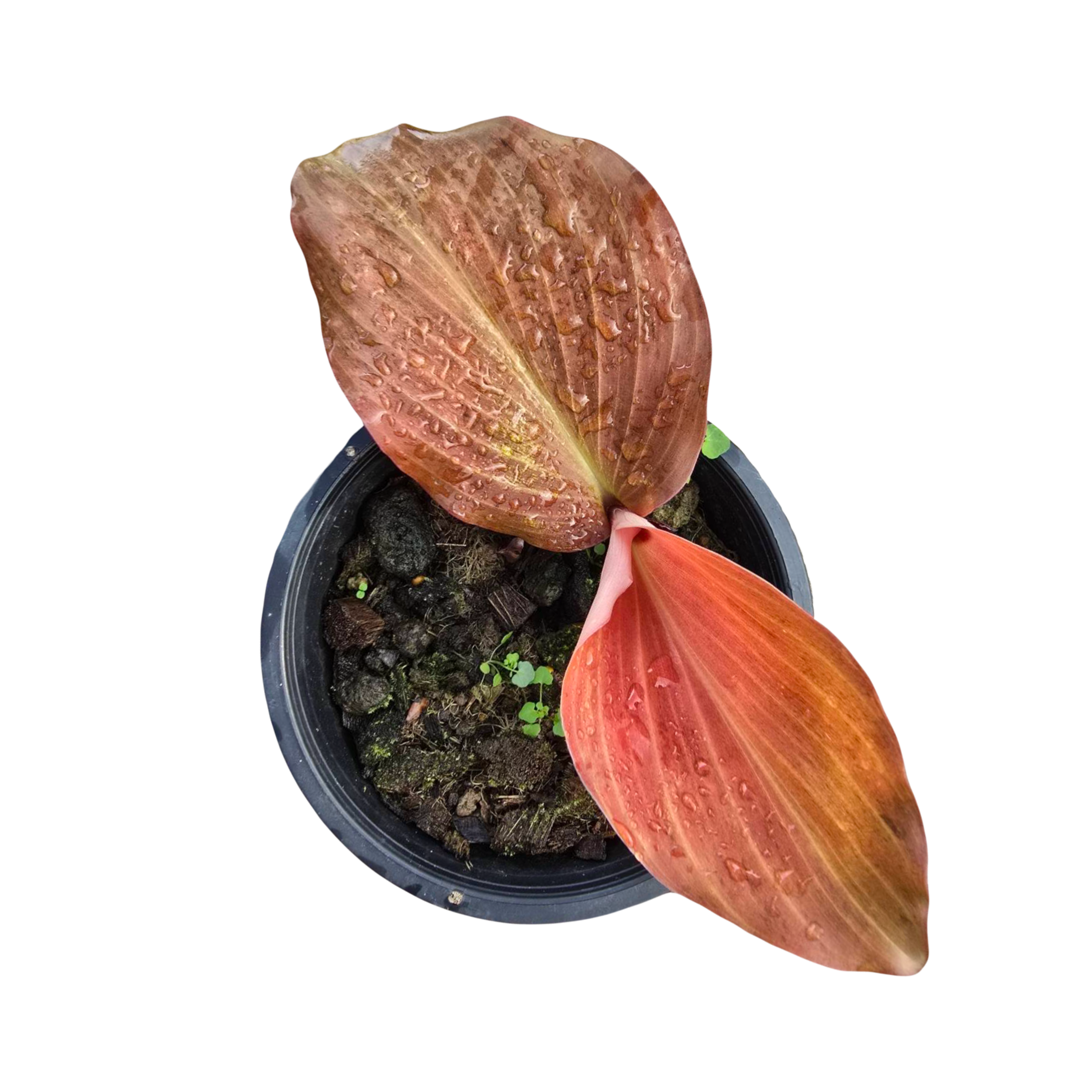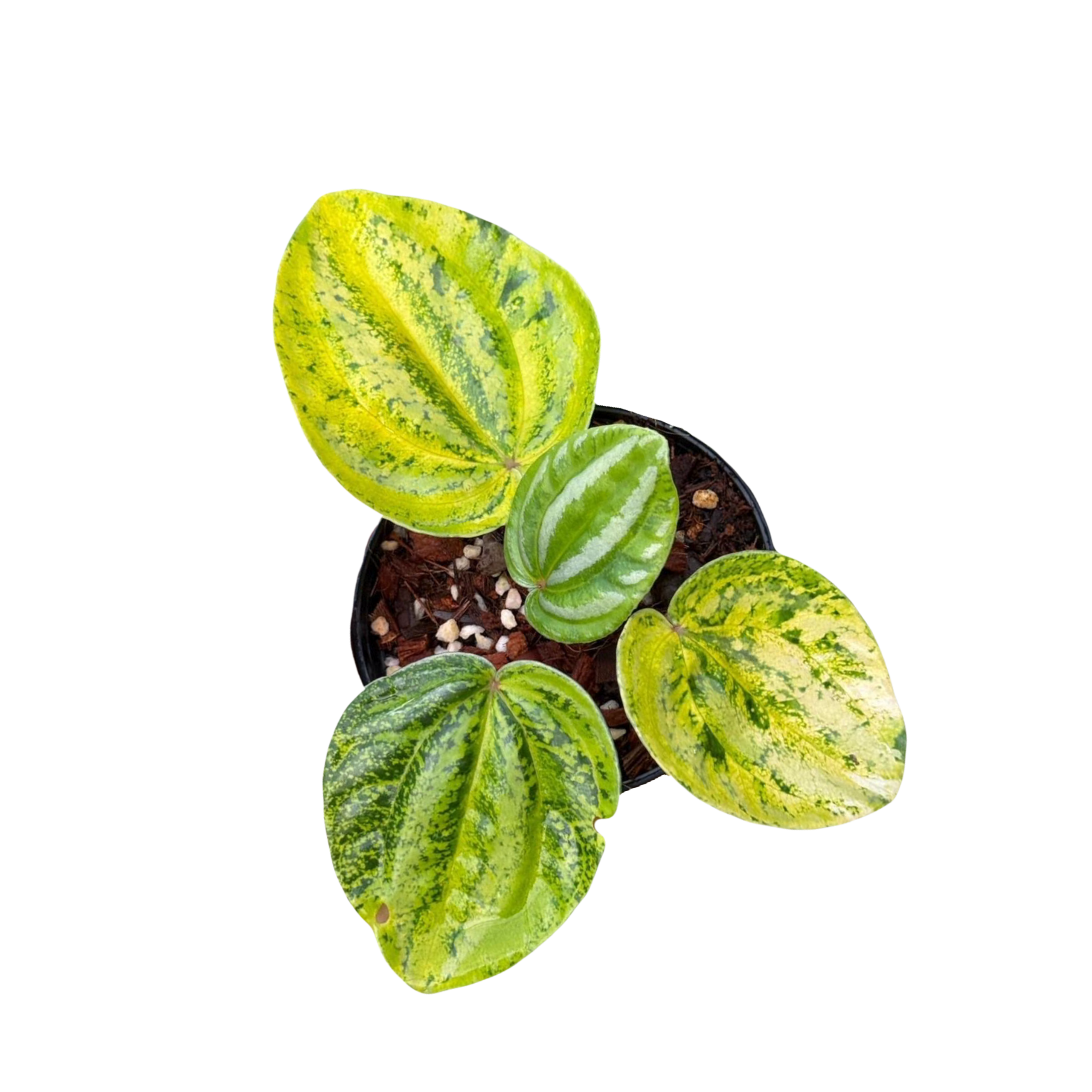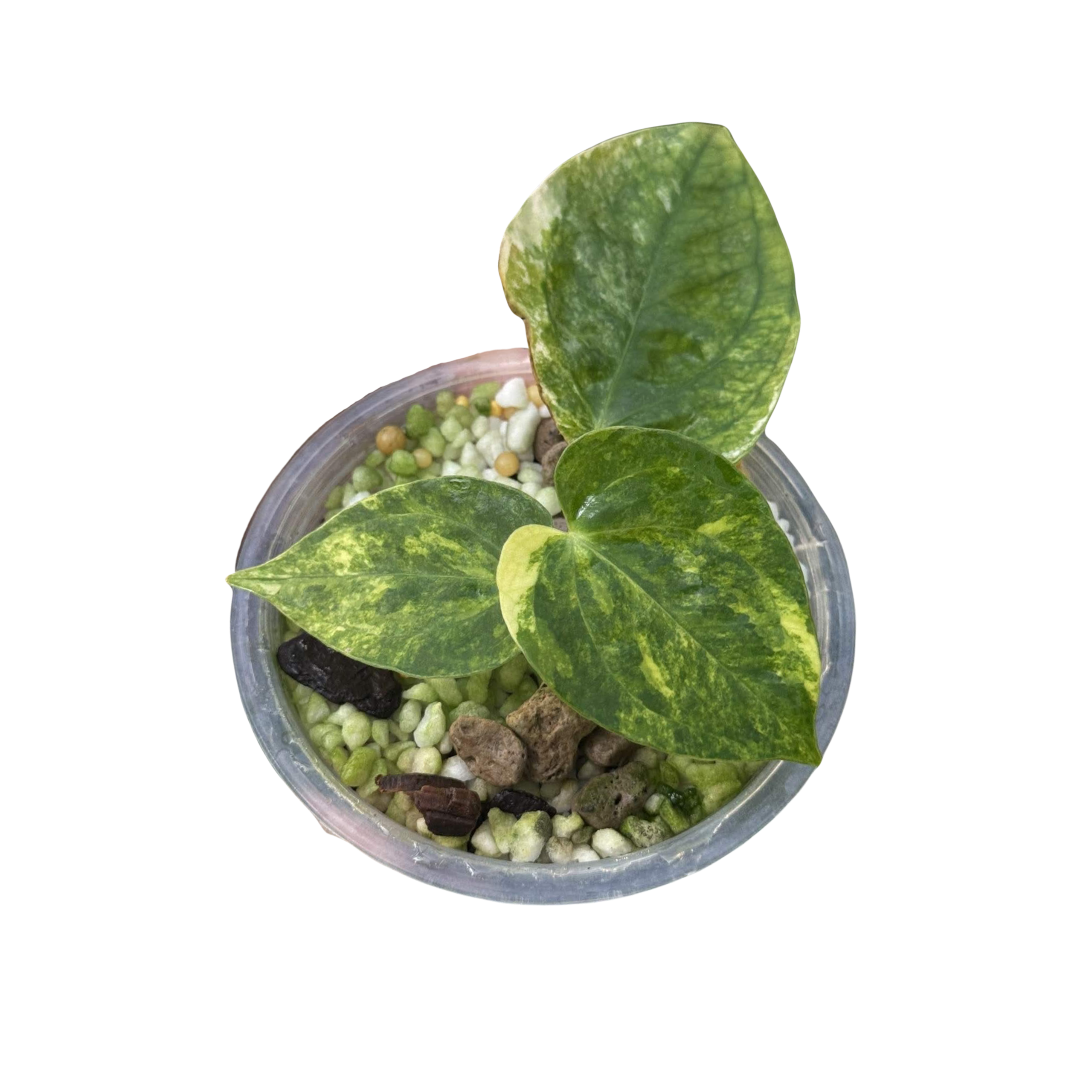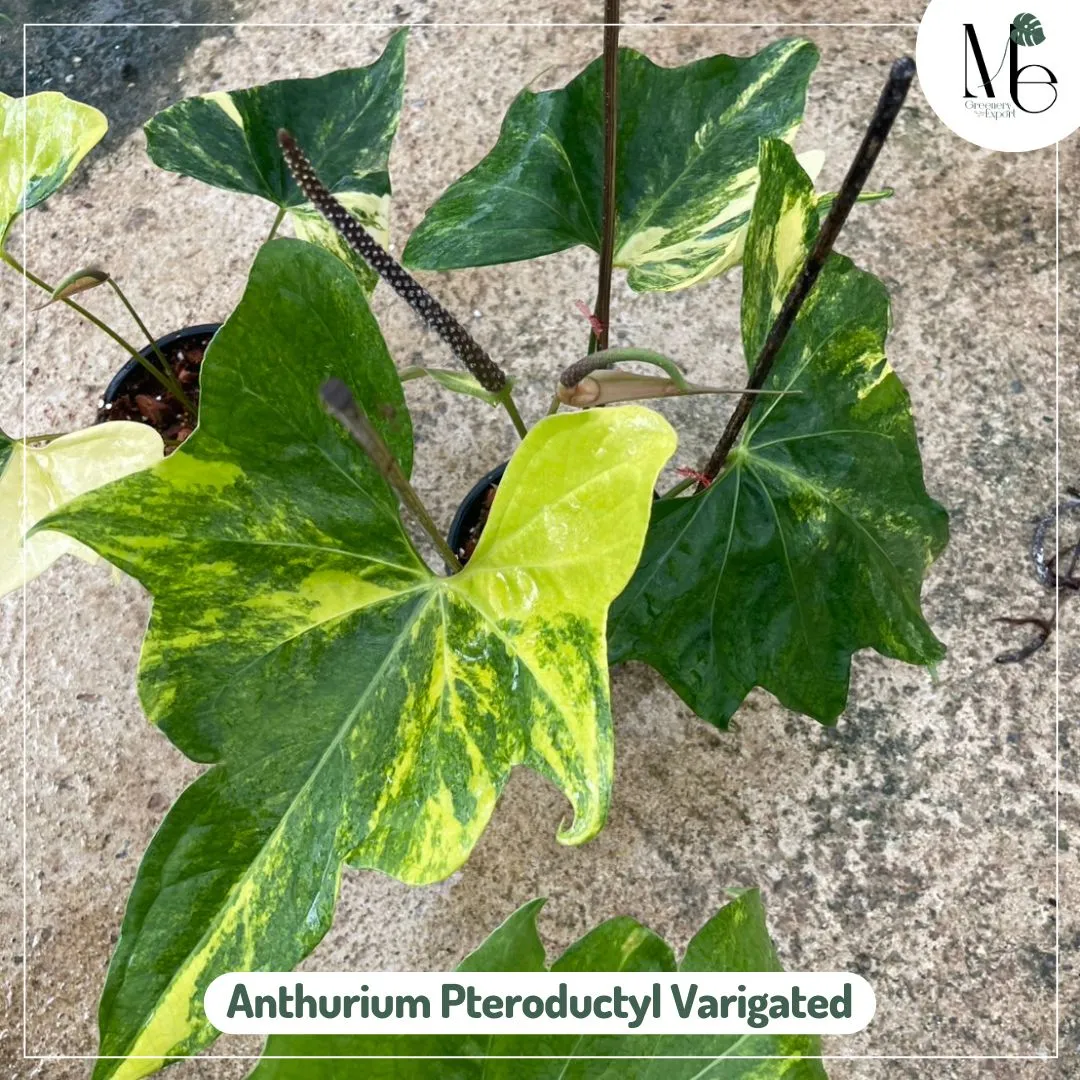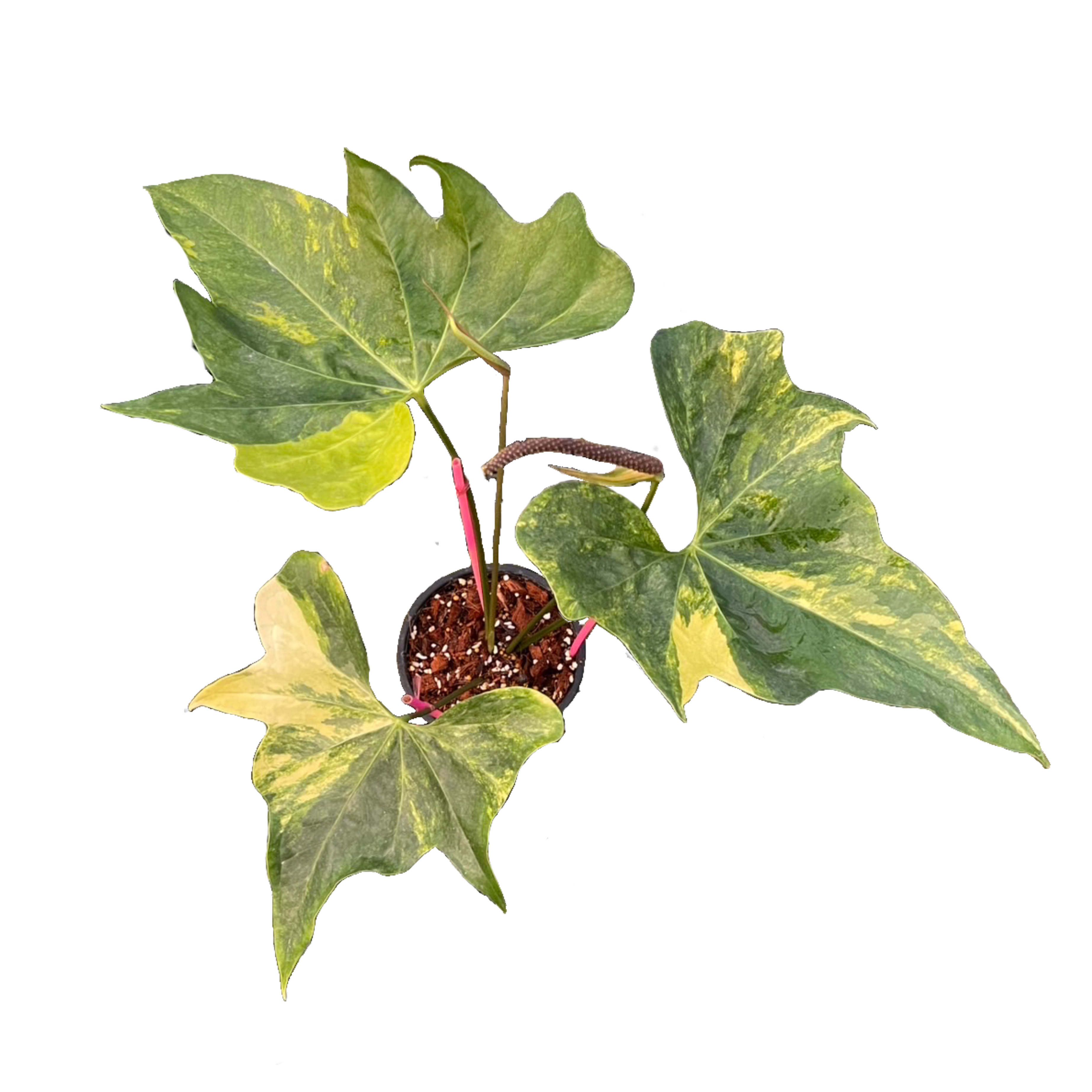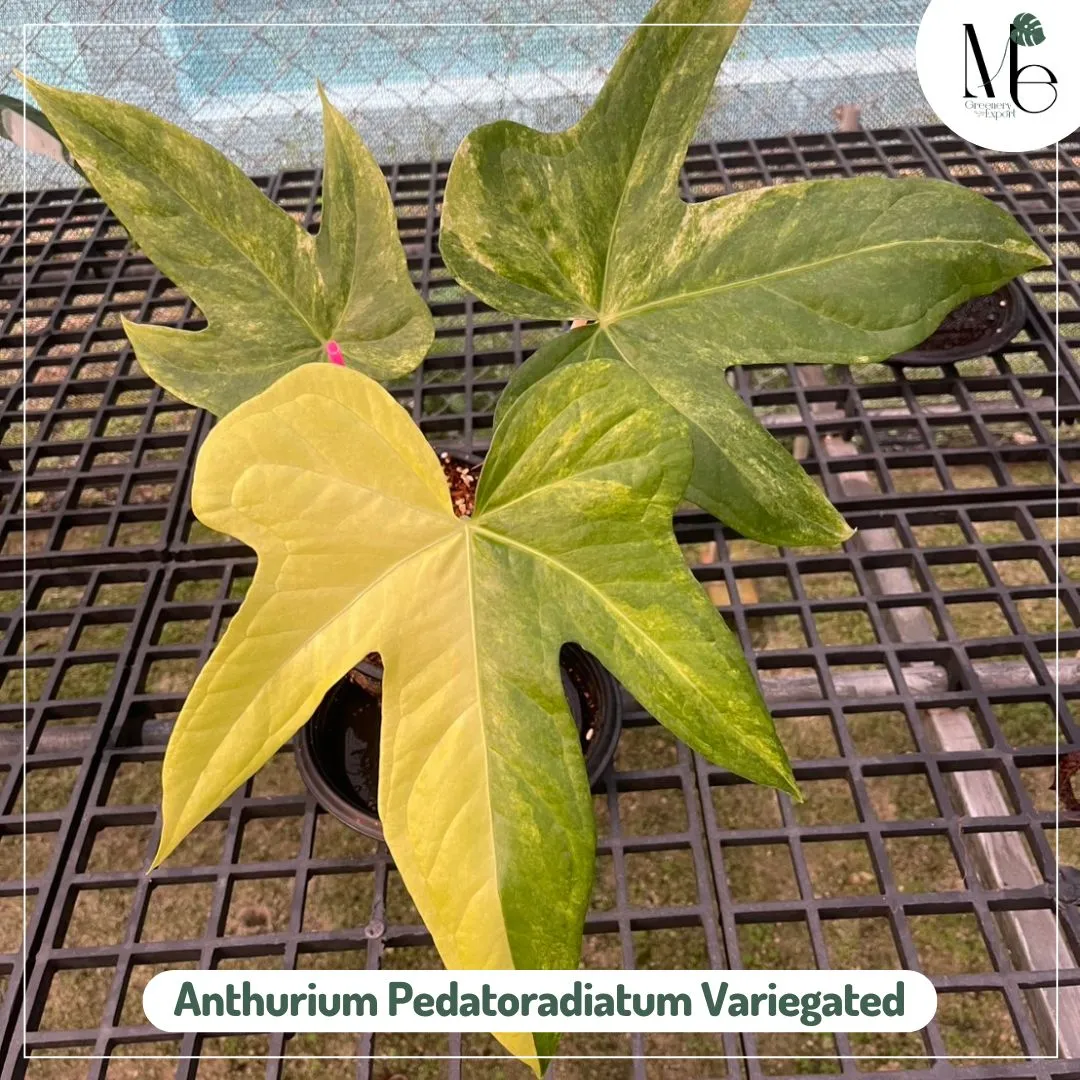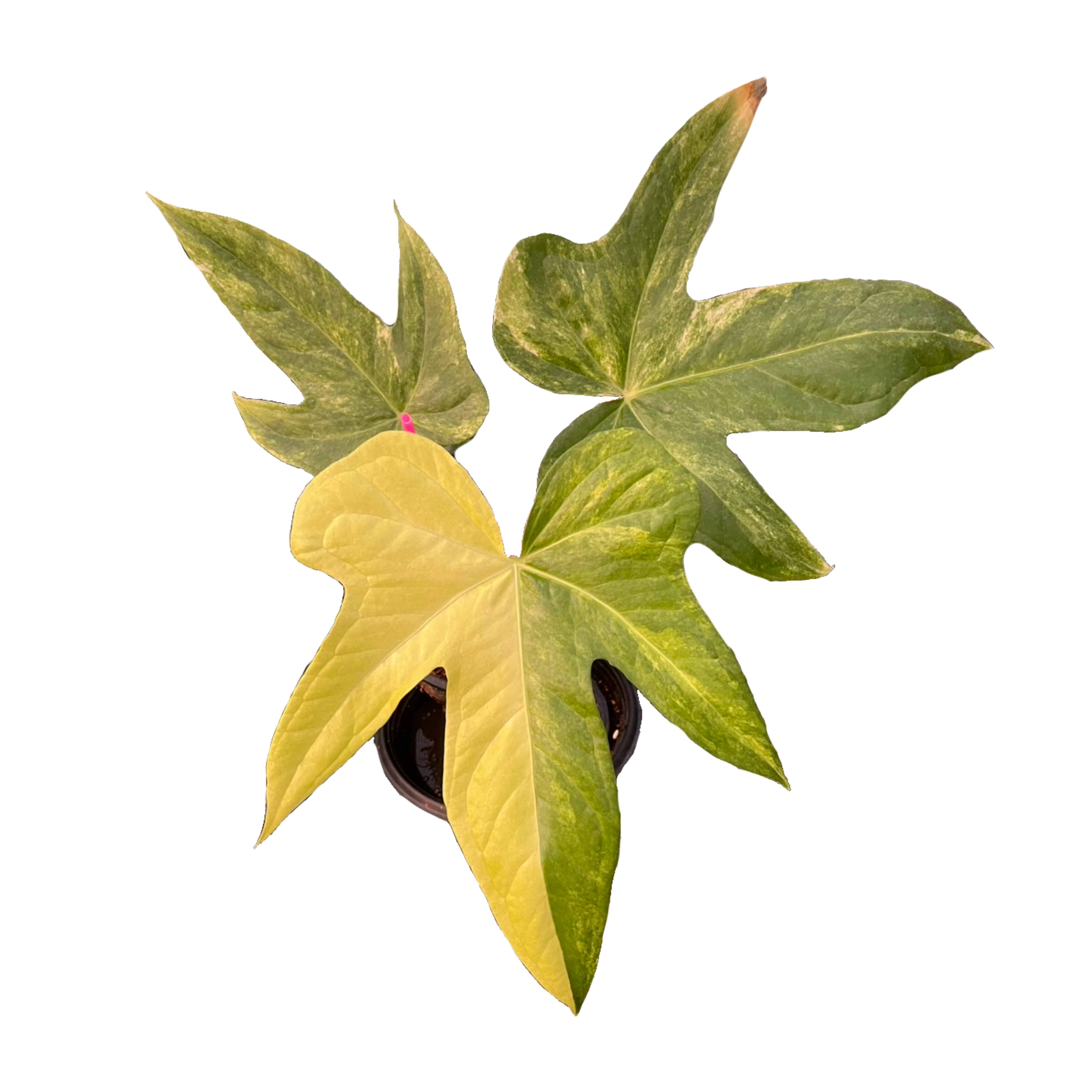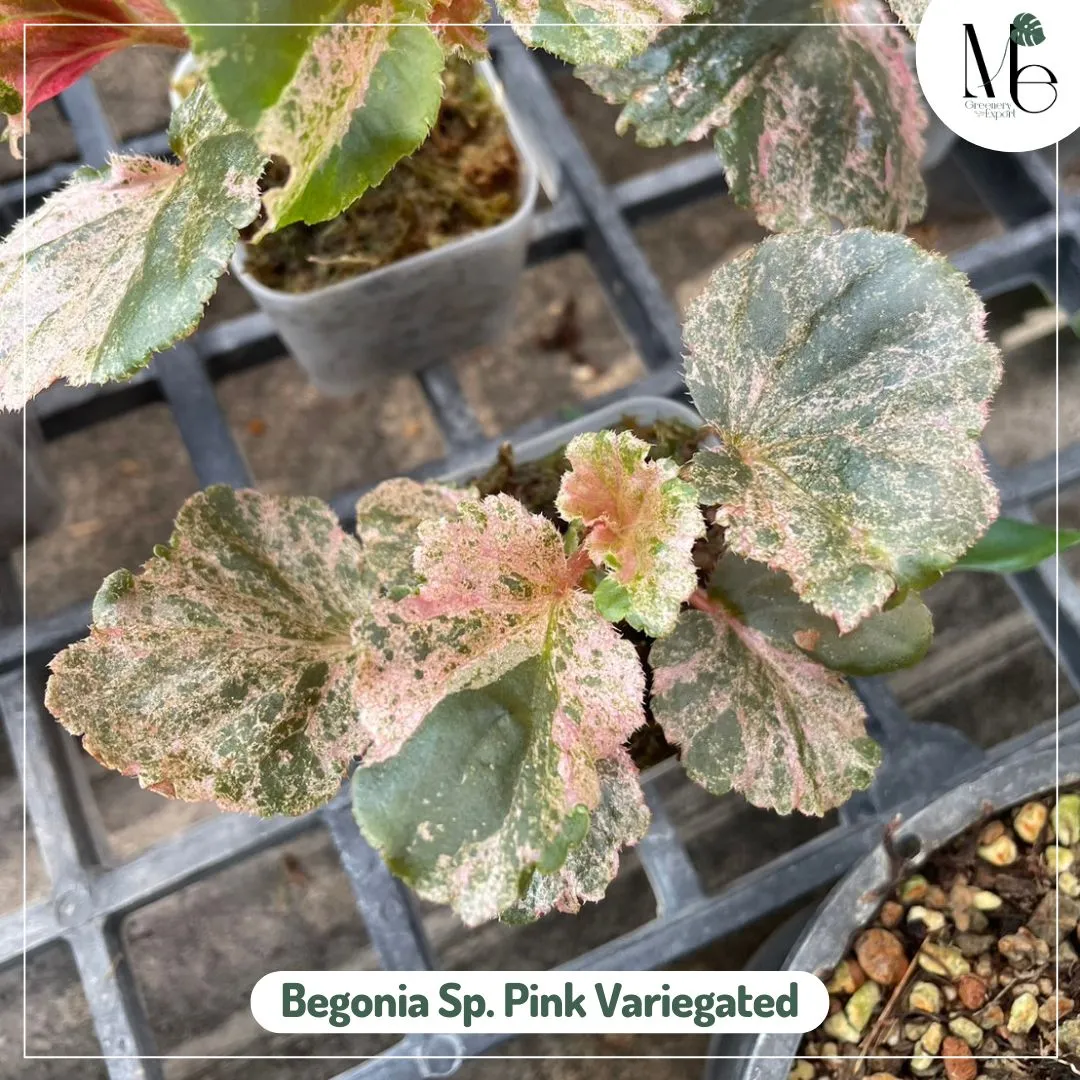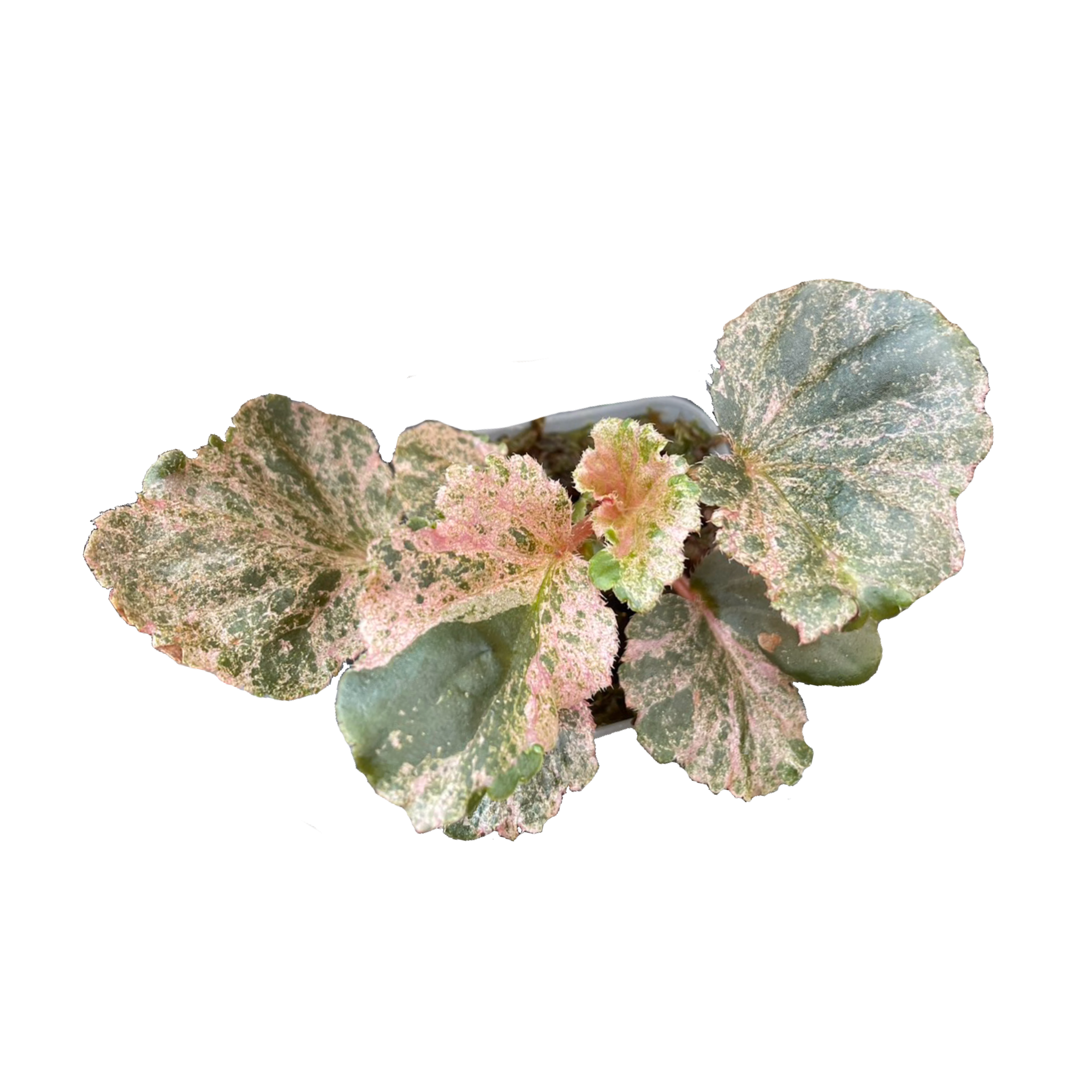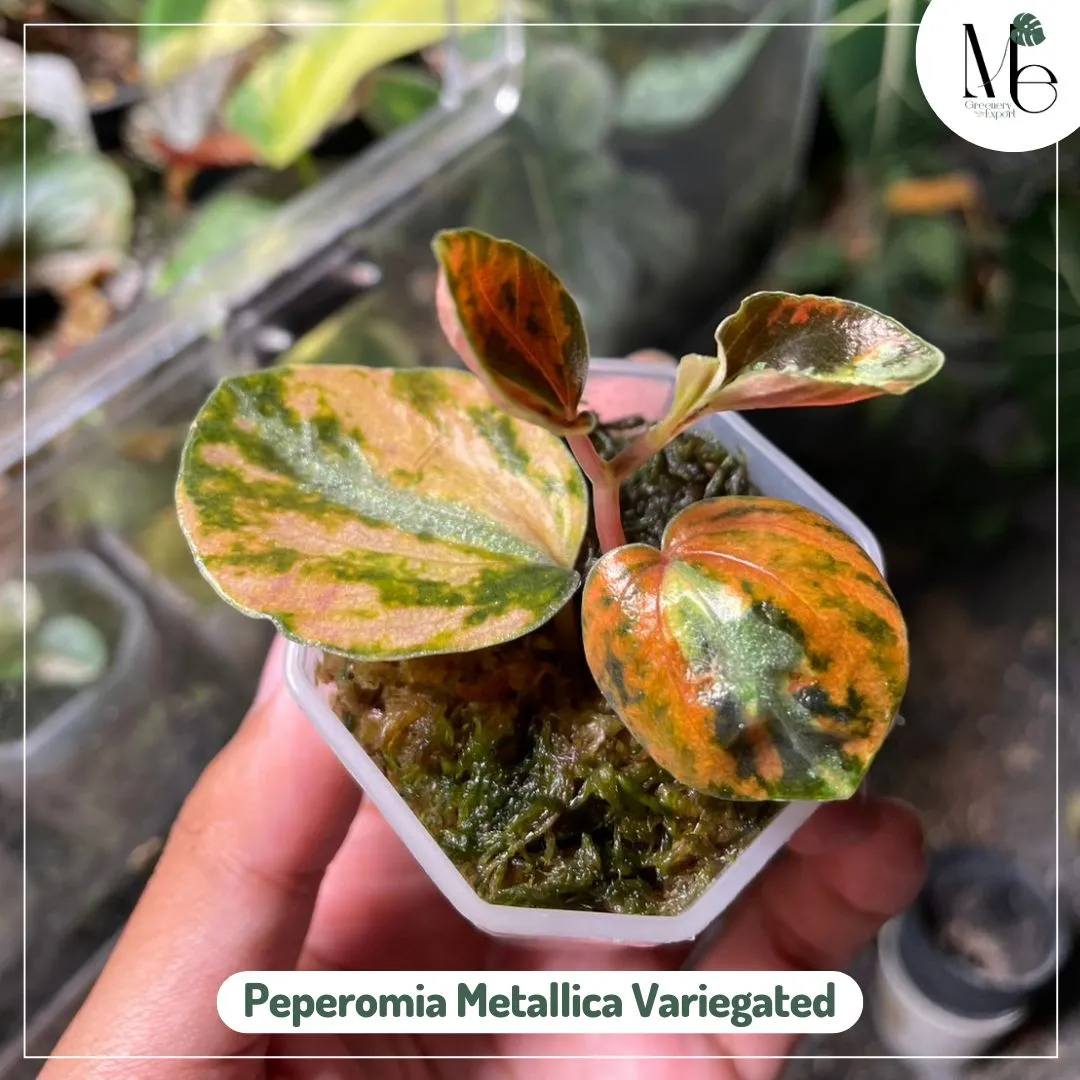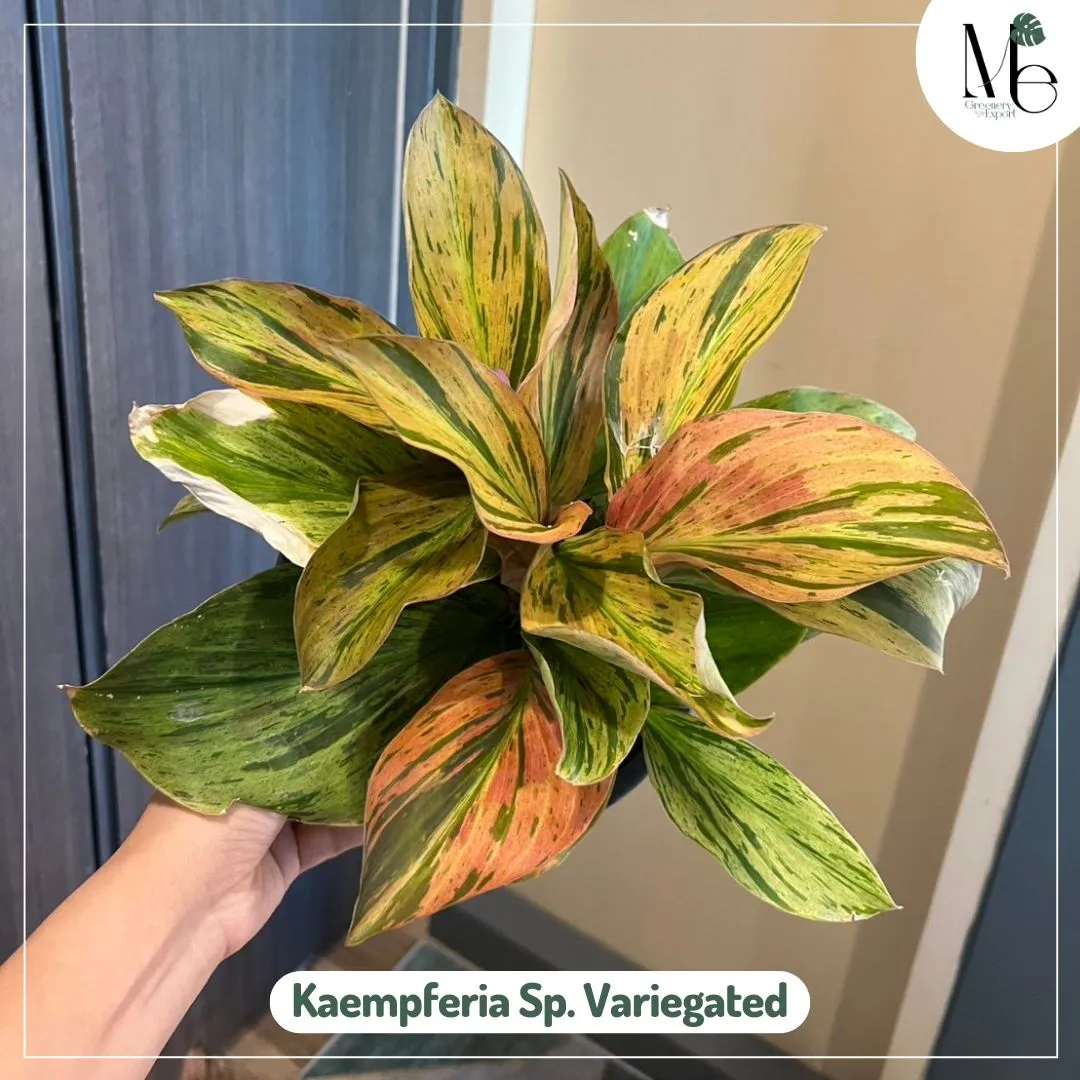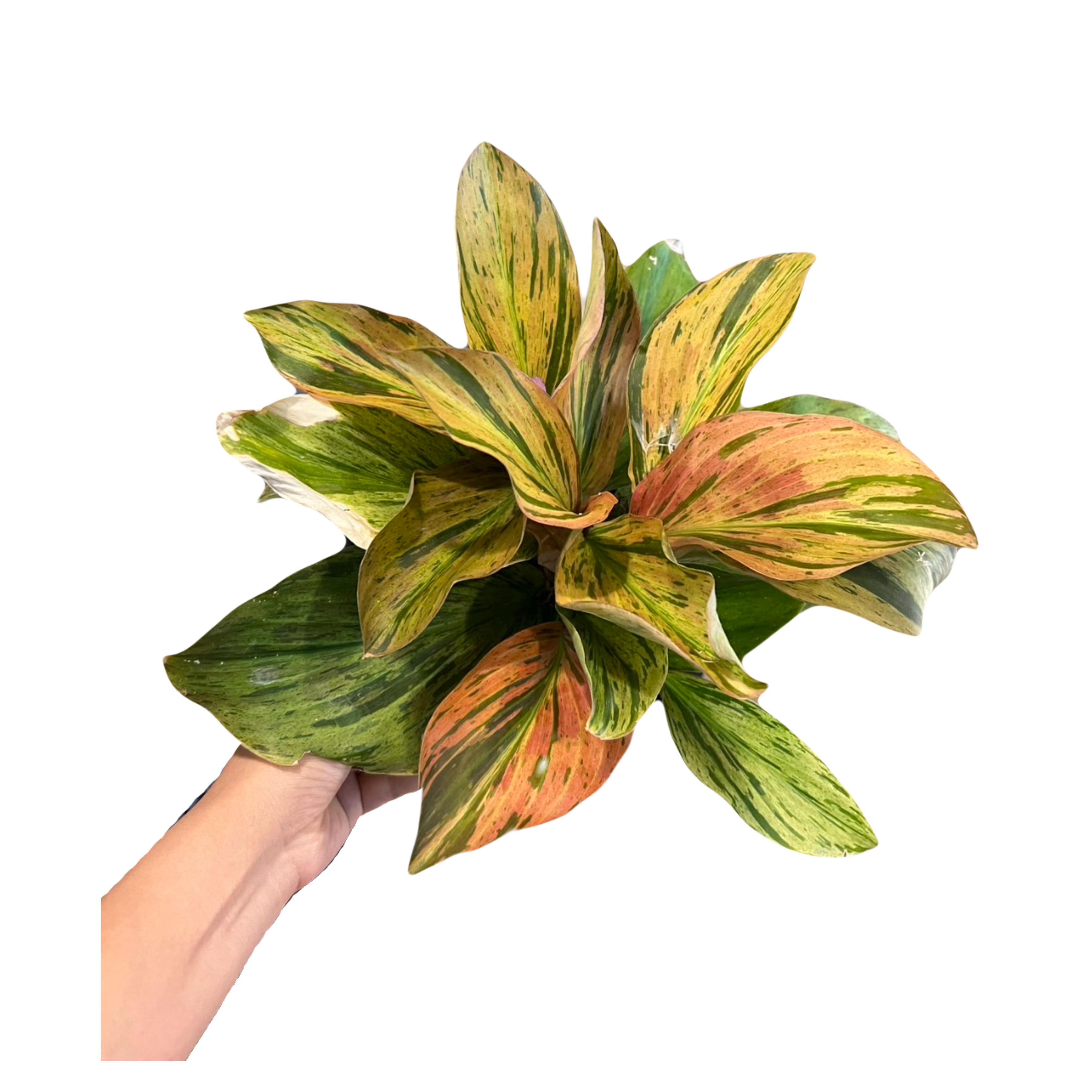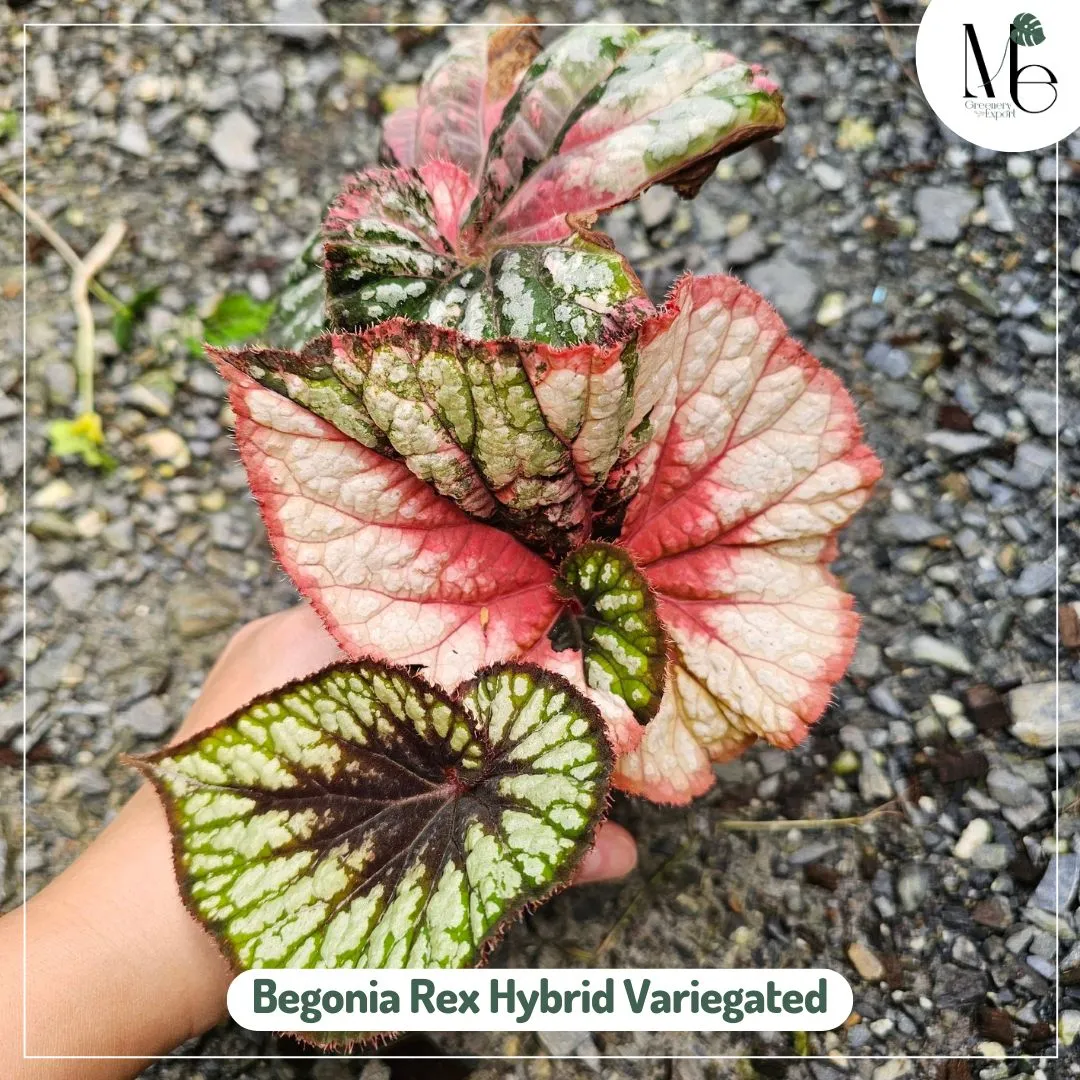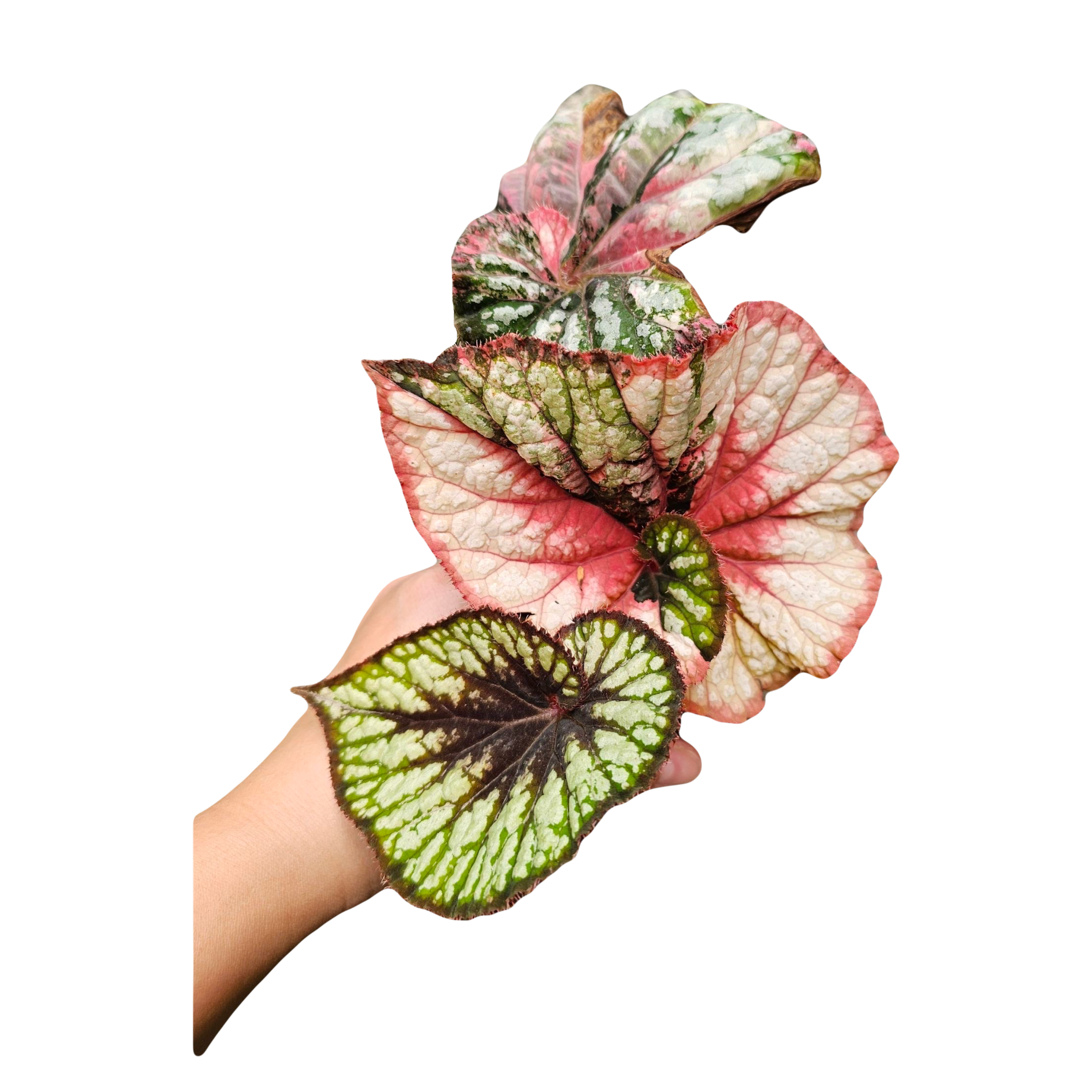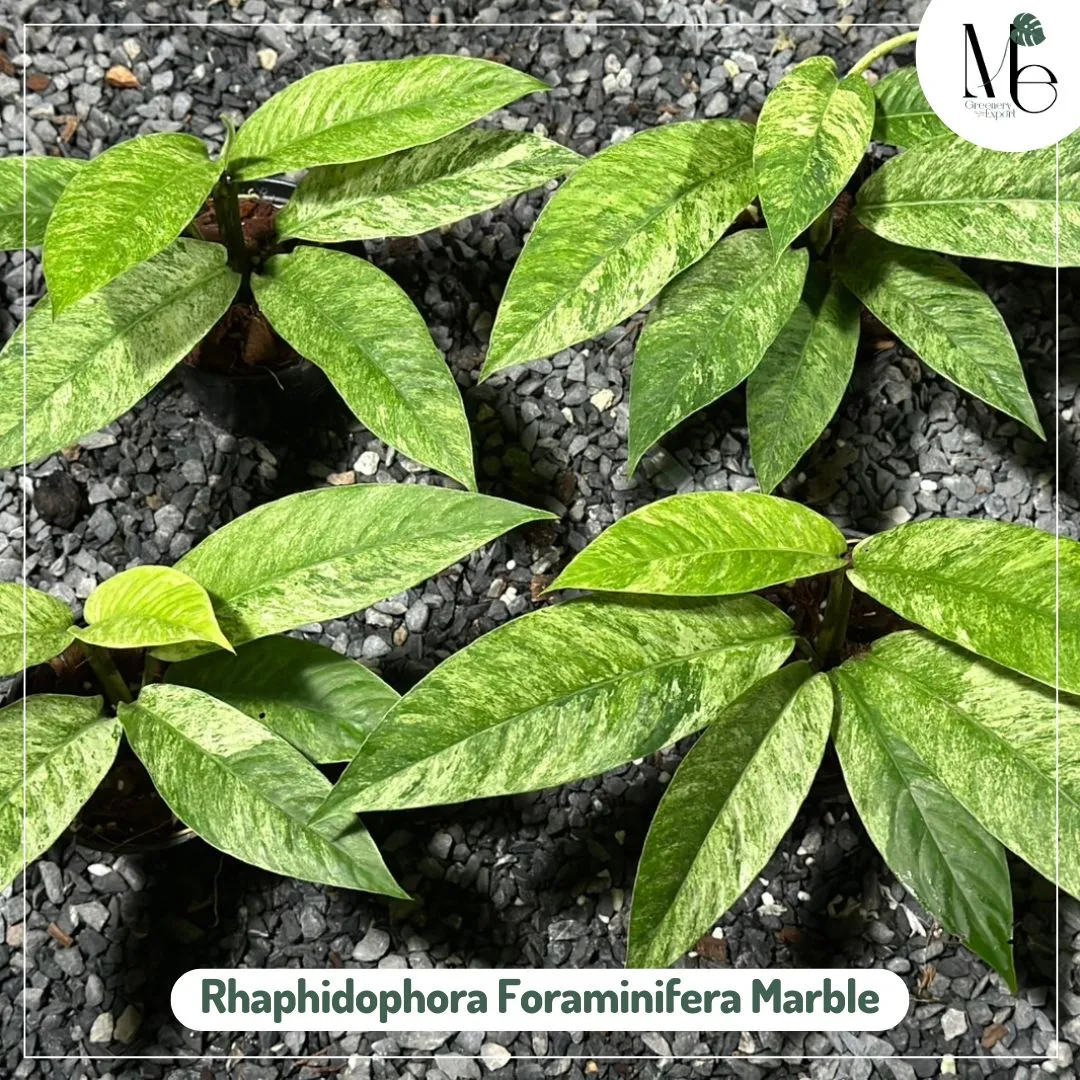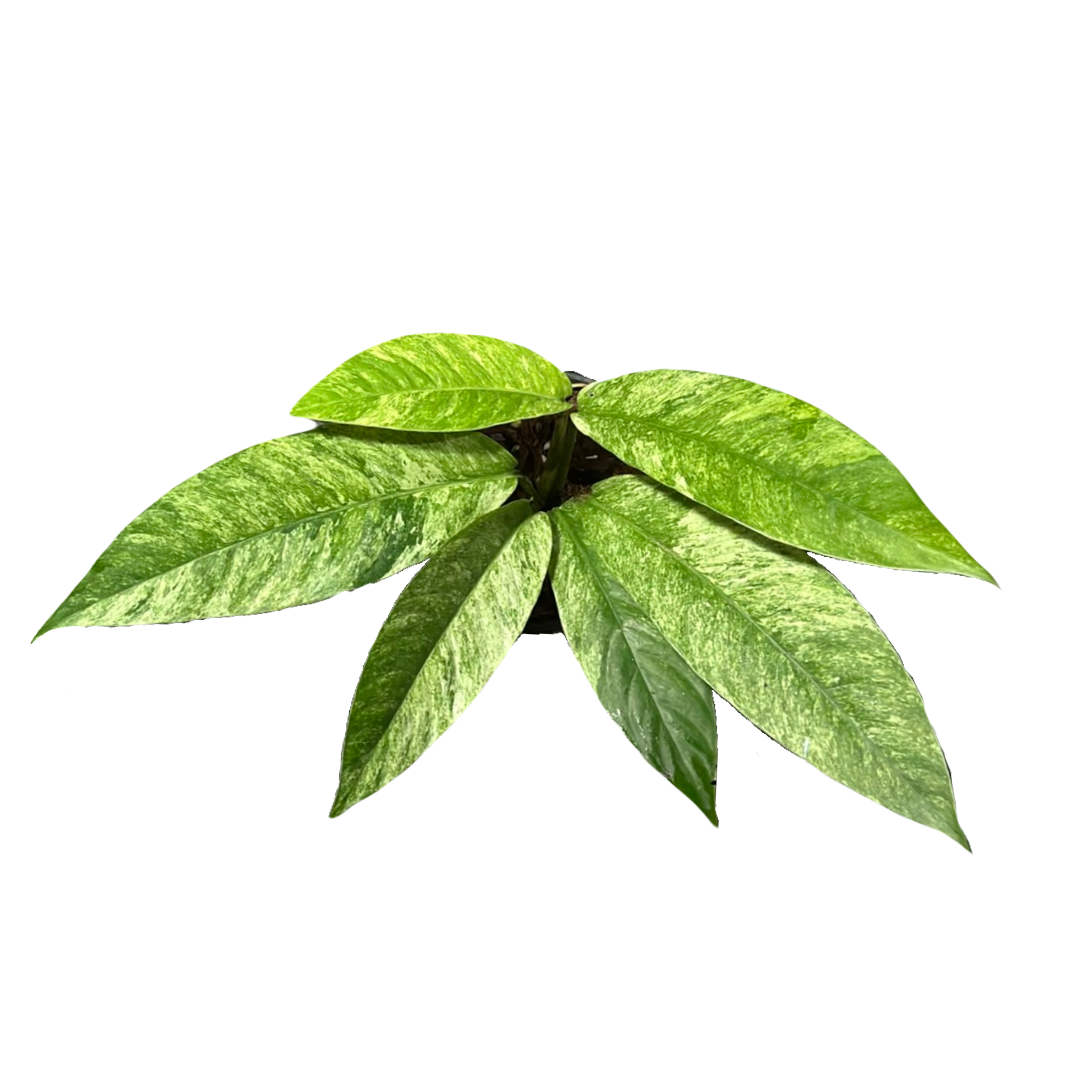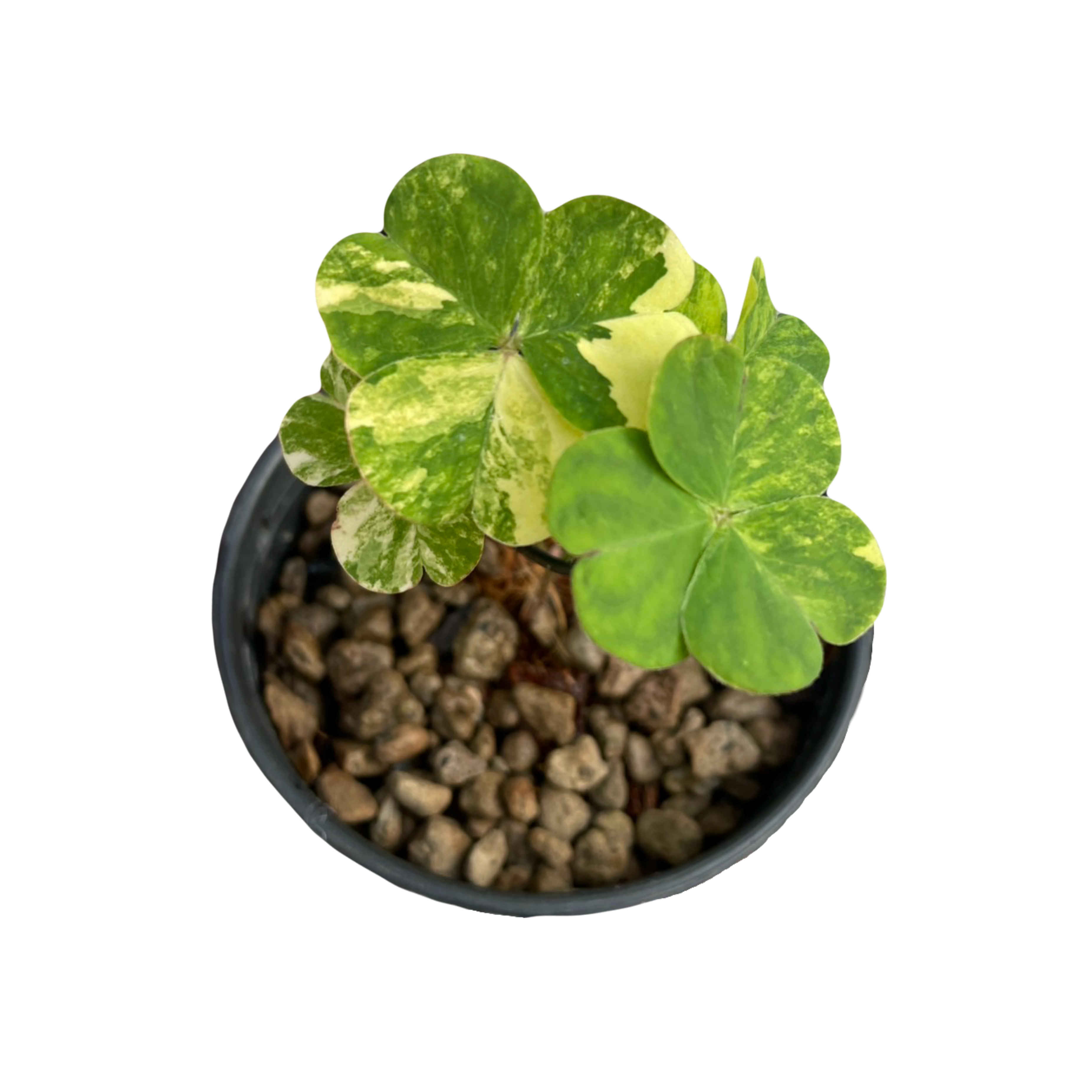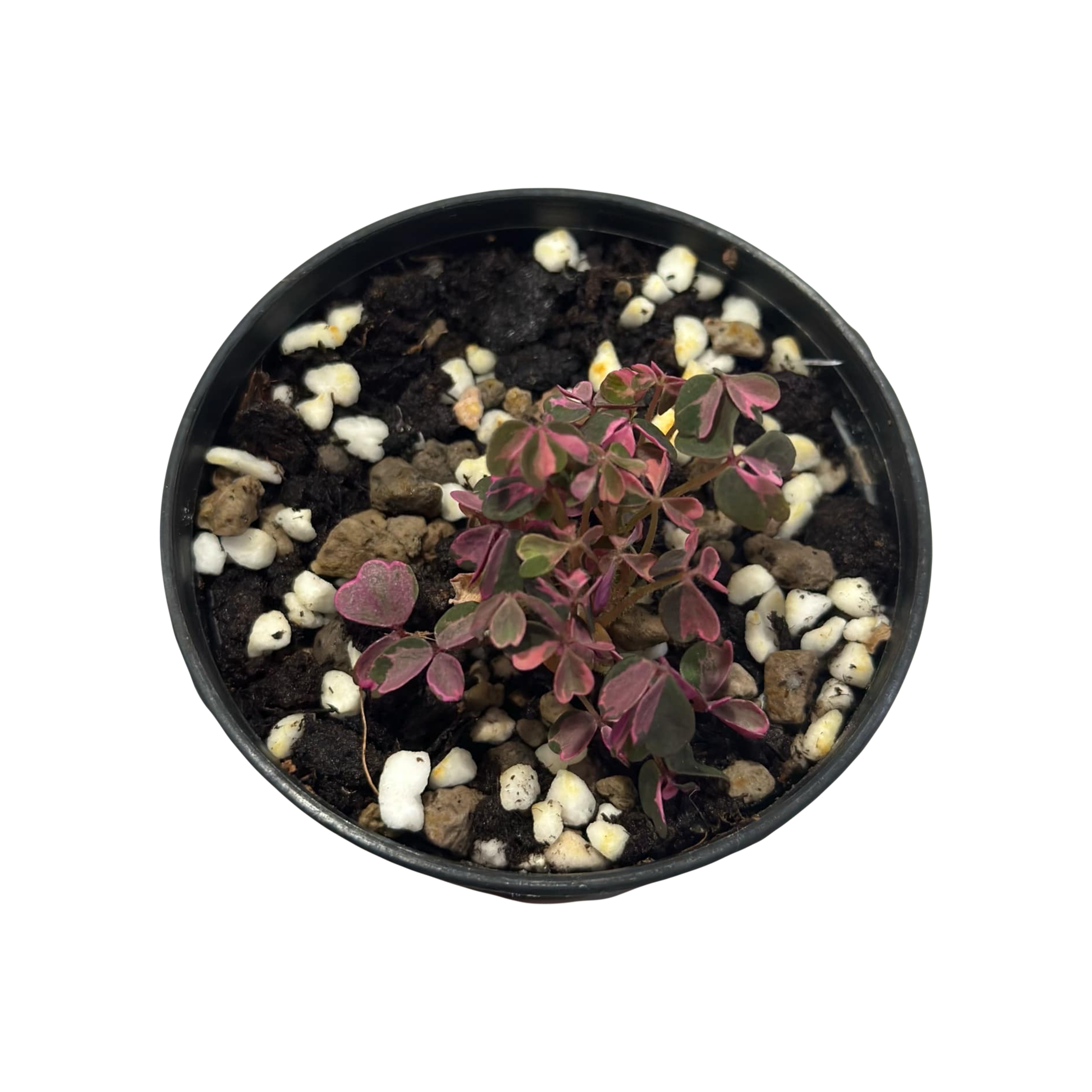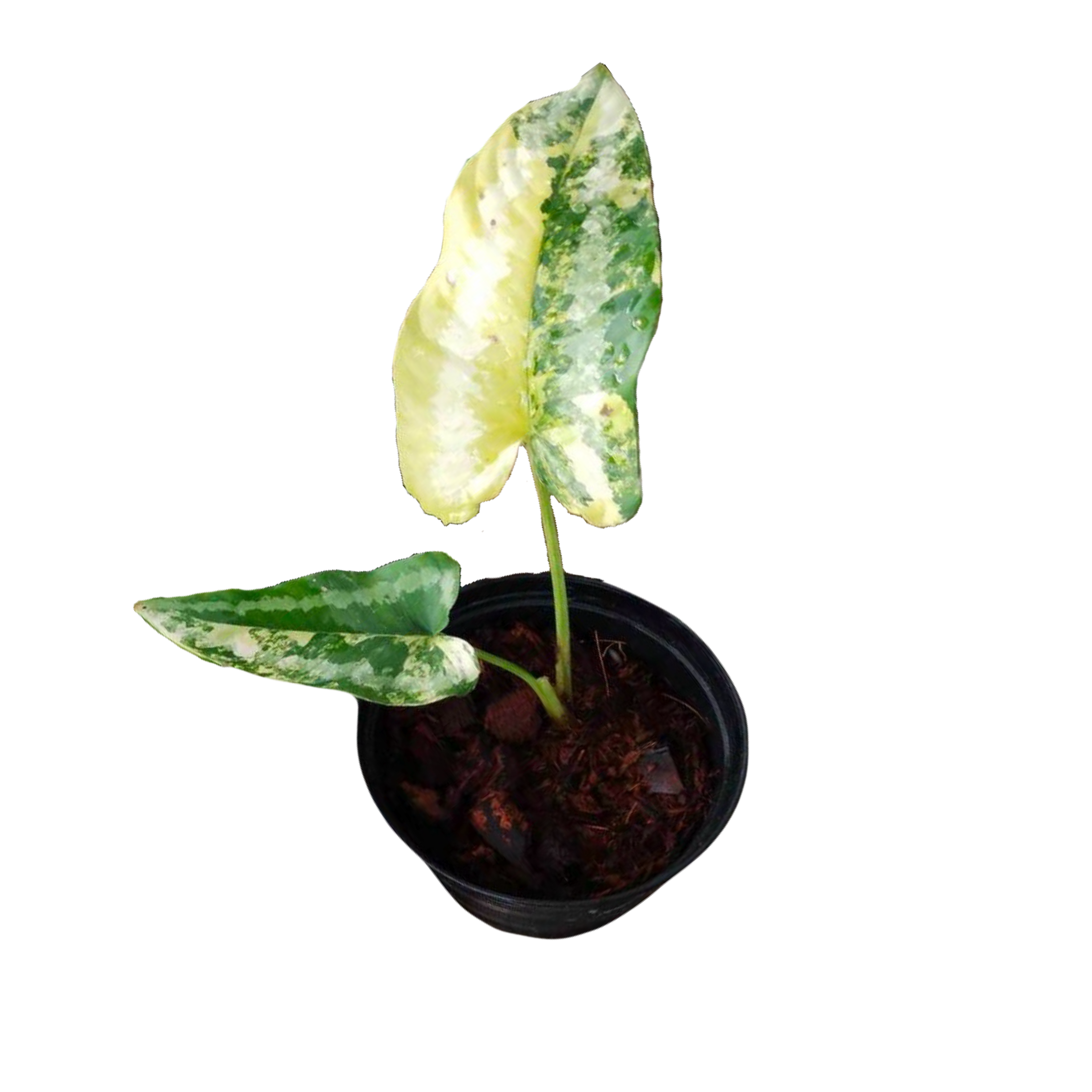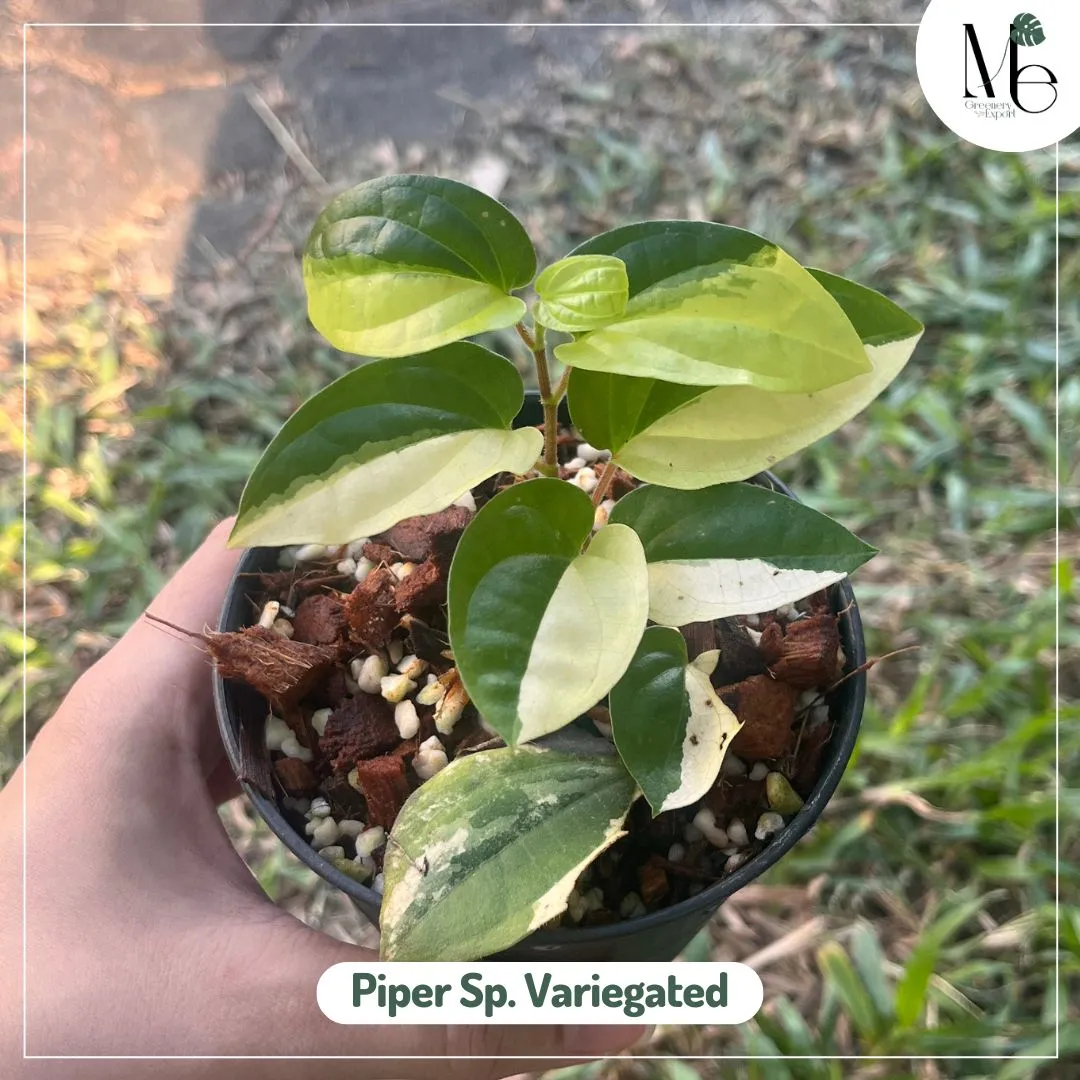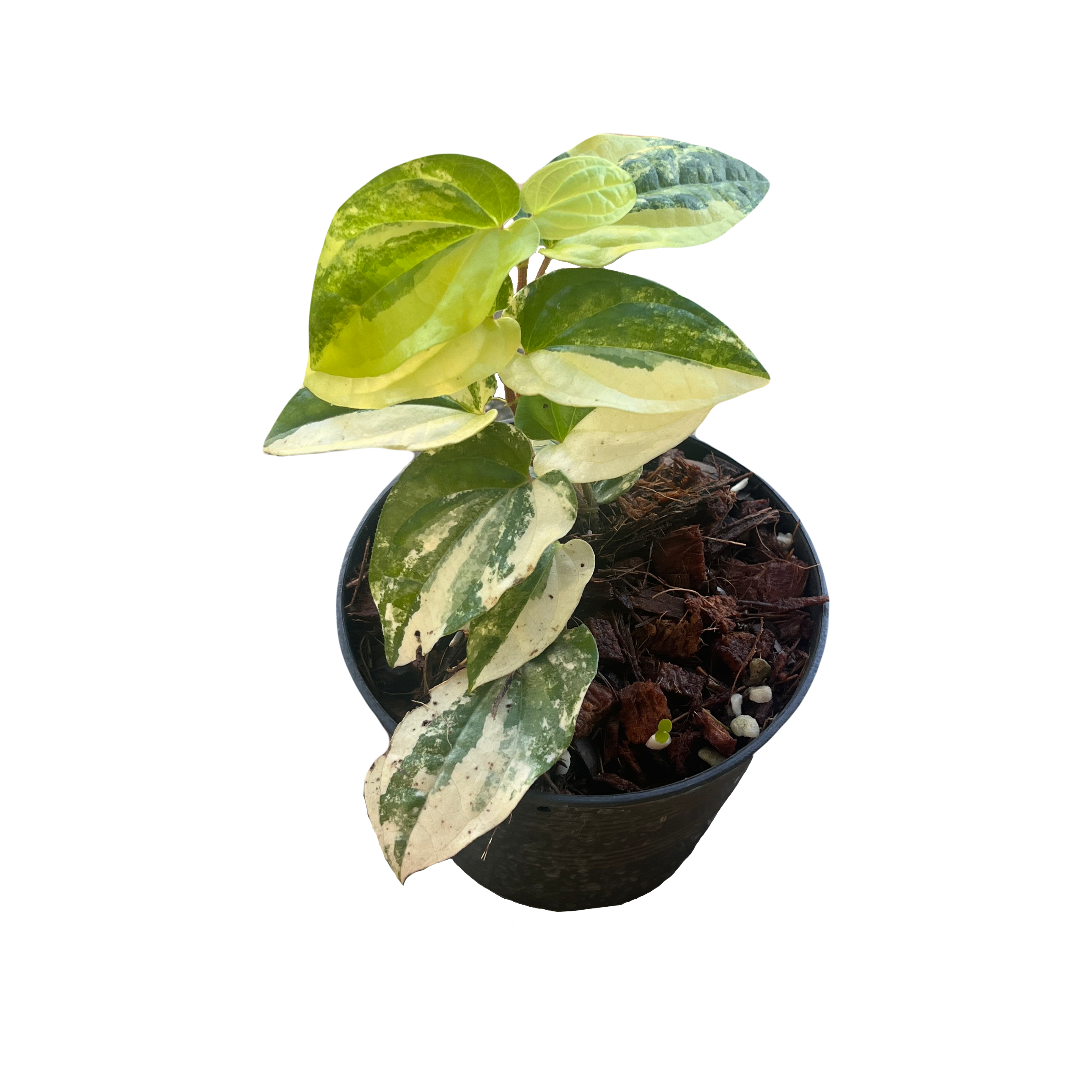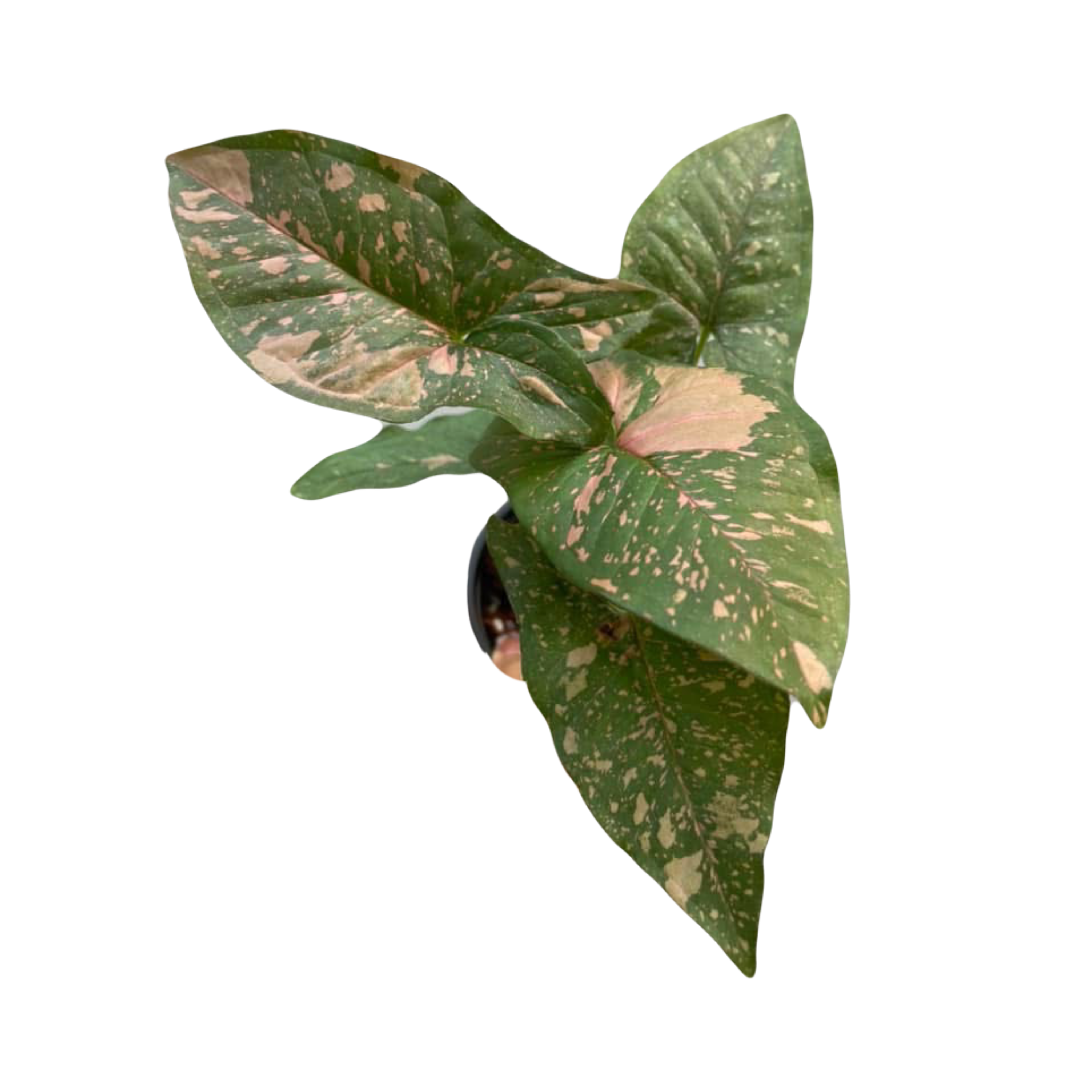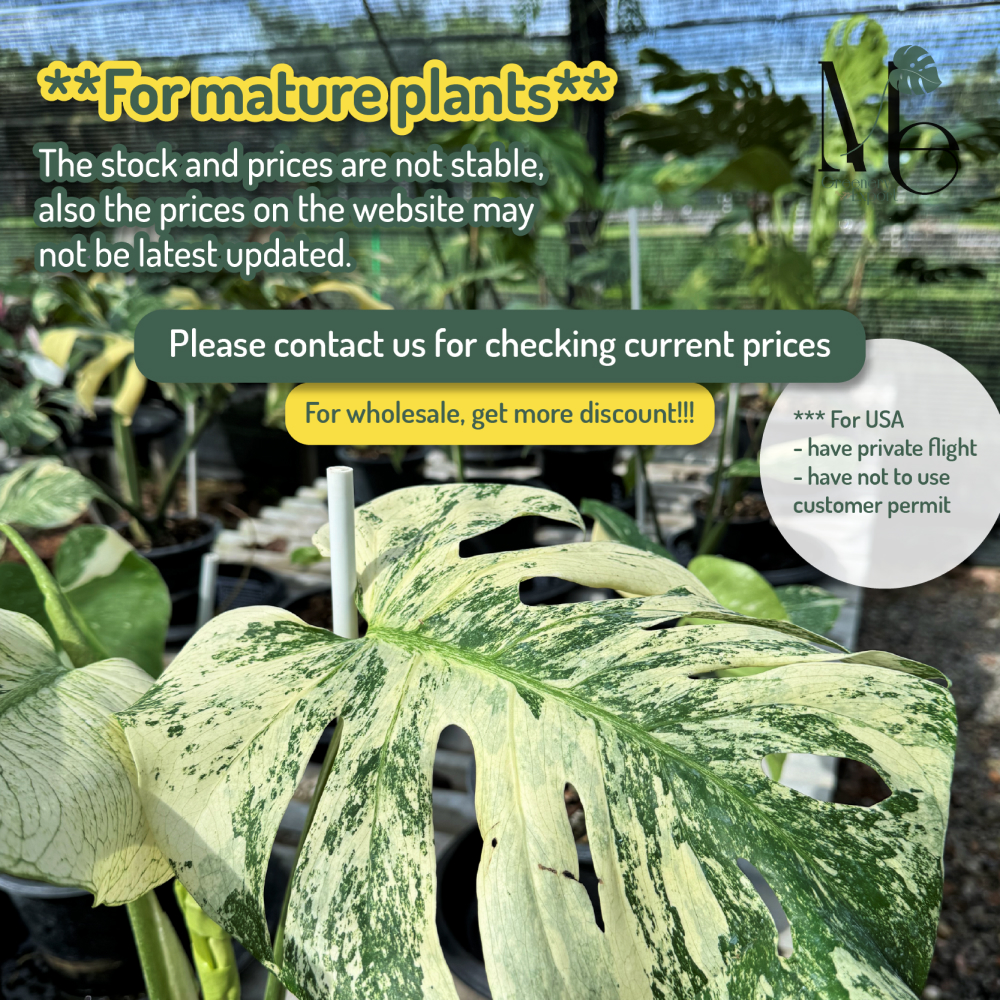Showing 1–20 of 87 resultsSorted by latest
Begonia La Moon
The Begonia La Moon is a stunning, striking houseplant known for its vibrant, colorful foliage that features silvery white leaves splashed with shades of pink, red, silver, and dark green veins. This compact begonia variety offers a unique blend of texture and color, making it a perfect statement piece for any indoor garden or shelf. How to care Light: Bright, indirect light (avoid direct sunlight to prevent leaf burn) Water: Keep soil consistently moist but not soggy; allow the top inch to dry out between waterings Humidity: Prefers moderate to high humidity; mist occasionally or use a humidifier if needed Temperature: Ideal range 65-75°F (18-24°C); protect from cold drafts and sudden temperature changes Soil: Well-draining, rich soil mix (a mix for tropical plants or African violets works well) How to order *The first image is just for advertising. [post-views]
Share this:
Anthurium RVDP Mint x Papillilaminum Variegated
The Anthurium RVDP Mint x Papillilaminum Variegated is a rare and captivating hybrid that combines the striking features of the Red Vein Dark Phoenix (RVDP) Mint and the elegant Papillilaminum. This unique cross results in a plant that showcases the best attributes of both parent plants, making it a prized addition to any collection. How to care Light: Provide bright, indirect light. Direct sunlight can scorch the leaves. Watering: Keep the soil consistently moist but not waterlogged. Water when the top inch of soil is dry. Humidity: Requires high humidity levels (60–80%). Use a humidifier or mist the plant regularly. Temperature: Ideal temperatures range from 65°F to 80°F (18°C to 27°C). Protect from cold drafts. Soil: Use a well-draining mix, such as orchid bark, perlite, and peat moss.
How to order *The first image is just for advertising. [post-views]Share this:
Epipremnum Giganteum Albo
The Epipremnum Giganteum Albo is a dramatic tropical vine known for its impressively large leaves adorned with bold splashes or patches of pure white variegation. Unlike subtle marbling, this plant’s variegation appears as clear, contrasting areas of bright white alongside deep green leaf surfaces, making each leaf strikingly unique. Its climbing habit means it thrives when given vertical support, growing larger and more impressive over time. How to care Light: Bright, indirect sunlight is best. Avoid direct sun which can burn the white variegated patches. Water: Water when the top 1-2 inches of soil feels dry. Well-draining soil is essential. Humidity: Prefers higher humidity but tolerates average indoor levels if monitored. Temperature: Ideal range is 65–85°F (18–29°C). Keep away from cold drafts. Soil: Use airy, chunky mix with components like perlite or orchid bark for drainage and airflow.
Start from / plant
How to order *The first image is just for advertising. [post-views]Share this:
Anthurium RVDP Mint x RVDP Mint
The Anthurium RVDP Mint x RVDP Mint is a refined cross between two Red Vein Dark Phoenix (RVDP) parents that both carry rare mint variegation, making this hybrid exceptionally unique. This plant doesn’t just turn heads — it practically glows. With its soft, minty green tones, intricate veining, and luxurious velvet leaves, it’s a must-have for serious aroid collectors. How to care Light: Bright, filtered light; no harsh direct sun Watering: Water when topsoil feels slightly dry; avoid soggy roots Humidity: 70%+ is ideal — use a pebble tray or humidifier Temperature: Prefers warmth (65–85°F / 18–29°C) Soil: Chunky, breathable mix (orchid bark, perlite, coco coir)
How to order *The first image is just for advertising. [post-views]Share this:
Kaempferia Sunset
Kaempferia Sunset is a red variegated version of Kaempferia variegated. It is a rare plant combining the lush, broad leaves of the former with the vibrant coloration of the latter, and also has deep red or bronze red leaves which are the most outstanding parts. This plant is native to Southeast Asia, especially Thailand and India. How to care Light: Bright, indirect light or partial shade Watering: Moderate; keep moist but not soggy during growth; reduce in dormancy Humidity: High humidity (above 60%) Temperature: Warm environment, Ideally 20–30°C Soil: Well-draining, rich in organic matter
Start from / plant
How to order *The first image is just for advertising. [post-views]Share this:
Peperomia Watermelon Variegated
Peperomia Argyreia Variegata, commonly known as Peperomia Watermelon Variegated, is one of rare Peperomia that has cute circlely green leaves with watermelon-like patterns and, even more beautiful, the variegated parts. Adding more lively to your place with its adorable appearance, this plant is going to pop-out of the zone where you place it. Such a lovely plant! How to care Light: Bright, indirect light (variegation fades in low light; burns in direct sun) Watering: Allow top 50% of soil to dry out between waterings; prefers slightly dry conditions over too wet Humidity: Moderate (40–60%), tolerates average indoor humidity Temperature: 18–26°C (65–80°F); avoid cold drafts or temps under 12°C (55°F) Soil: Well-draining potting mix (cactus mix + perlite is great) How to order *The first image is just for advertising. [post-views]
Share this:
Anthurium Pap var. x Green Mamba Variegated
Bring bold color and rare beauty into your space with the Anthurium Pap var. x Green Mamba Variegated. This stunning hybrid combines the best traits of two sought-after varieties, featuring uniquely variegated leaves with striking patterns in shades of green, cream, and white. Each leaf is a one-of-a-kind work of art, making this plant a standout in any collection. How to care Light: Place in bright, indirect light. Avoid direct sunlight, which can burn the leaves or fade the variegation. Watering: Water when the top 1–2 inches of soil feels dry. Don't let the plant sit in water. Humidity: Aim for moderate to high humidity. Temperature: Keep in temperatures between 65–80°F (18–27°C) Soil: A blend of orchid bark, perlite, and potting soil is ideal. Good drainage is key to prevent root rot.
How to order *The first image is just for advertising. [post-views]Share this:
Anthurium Pterodactyl Variegated
The Anthurium Pterodactyl Variegated is a rare and stunning variety of Anthurium, known for its unique, elongated, and strikingly unusual leaf shape, which resembles the wings of a pterodactyl (hence the name). The variegated version of this plant adds a beautiful and sought-after twist, with the distinctive marbled patterns of cream, white, or yellow contrast with the deep green of the leaves. How to care Light: Aims for a spot where the light is filtered or diffused, like near a window with sheer curtains. Watering: Allow the top few inches of soil to dry out before watering again. Humidity: Loves high humidity, ideally 60% and above. Temperature: Keep the temperature between 65°F to 80°F (18°C to 27°C). Soil: Use a well-draining potting mix, such as one designed for aroids.
How to order *The first image is just for advertising. [post-views]Share this:
Anthurium Pedatoradiatum Variegated
The Anthurium Pedatoradiatum Variegated’s overall appearance is both elegant and dramatic, making it a favorite among collectors. It is known for its unique, deeply dissected leaves and stunning variegated patterns. The leaves have a distinctive, finger-like shape that makes it stand out, and the variegation ranges from creamy white to soft yellow, creating a beautiful contrast with the dark green background. How to care Light: This plant thrives in bright, indirect light. Direct sunlight can damage the leaves, leading to burn marks or fading of the variegation. Soil: A mix designed for aroids, or a combination of peat, perlite, and orchid bark, is ideal for encouraging healthy root development. Watering: Water the plant when the top of the soil feels dry to the touch, but ensure excess water doesn’t collect in the saucer. Humidity: Ideally, humidity levels should be above 60%. Temperature: It prefers warm temperatures, ideally between 65°F and 80°F (18°C to 27°C).
How to order *The first image is just for advertising. [post-views]Share this:
Begonia Sp. Pink Variegated
The Begonia Sp. Pink Variegated is a rare and stunning variety that stands out for its striking, pink-variegated leaves and beautiful, unique appearance. This begonia species is a must-have for plant collectors due to its eye-catching foliage and elegant aesthetic. How to care Light: Filtered Light is ideal—placing it near a window with sheer curtains or in a well-lit room works best. Soil: Use a well-draining, peat-based potting mix to ensure the plant doesn't sit in excess water. Watering: Begonias like to be kept relatively moist but not waterlogged. Water the plant when the top inch of soil feels dry. Humidity: Begonias, especially variegated types, love high humidity. If you live in a dry climate, placing the plants in terrariums is a perfect choice. Temperature: Ideal temperatures for this begonia are between 65–75°F (18–24°C).
Start from 38$/ plant
How to order *The first image is just for advertising. [post-views]Share this:
Peperomia Metallica Variegated
The Peperomia Metallica Variegated is a truly stunning and rare gem in the world of houseplants. Known for its iridescent foliage and striking variegation, it’s a plant that turns heads and adds a touch of elegance to any space, including terrariums where the plant can be more attractive. Its unique metallic sheen and vibrant colors make it an eye-catching centerpiece, whether it's nestled in a closed terrarium or displayed on its own. How to care Light: Thrives in bright, indirect light. Too much direct sunlight can scorch its leaves, while low light may cause it to lose its vibrant color and metallic sheen. Soil: Loves a well-draining, lightweight potting mix. A mix designed for succulents or a peat-based mix with added perlite works well to prevent water from pooling at the roots. Watering: Prefers to dry out between waterings. Water it thoroughly when the top 1–2 inches of soil feel dry to the touch. Be careful not to overwater, as this can lead to root rot. Humidity: Enjoys slightly higher humidity, making it a perfect candidate for humid environments like bathrooms or terrariums. Temperature: Does best in temperatures between 60–80°F (15–27°C). Keep it away from cold drafts or temperature fluctuations, as it can stress the plant.
Start from 86$/ plant
How to order *The first image is just for advertising. [post-views]Share this:
Kaempferia Sp. Variegated
The Kaempferia Sp. Variegated is an exquisite and unique plant, prized for its striking variegated foliage and compact growth habit. Often referred to as “hidden ginger,” this plant is a member of the ginger family and is admired for its ornamental leaves and delicate flowers. While its variegated leaves are the main attraction, the plant also produces beautiful, small, and fragrant purple flowers that emerge from the ground in late summer or early fall, adding an extra layer of interest to any collection. How to care Light: Thrives in bright, indirect light. Direct sunlight can scorch its delicate leaves, so placing it in a location with filtered light is ideal. Soil: Prefers a well-draining, lightweight potting mix. A peat-based mix with added perlite or sand works well Humidity: Thrives in higher humidity levels. It’s best suited for environments like bathrooms or rooms with higher moisture levels. Temperature: Prefers warm conditions, with ideal temperatures between 65–80°F (18–27°C). Keep it away from cold drafts.
Start from / plant
How to order *The first image is just for advertising. [post-views]Share this:
Begonia Rex Hybrid Variegated
The Begonia Rex Hybrid Variegated is an exquisite plant that deserves a spot in any collection, especially for those who appreciate unique and vibrant foliage. With its stunning, colorful leaves, this hybrid variety features an intricate mix of variegation that can include shades of silver, pink, red, green, and even purple. When compared to more common Begonia varieties, it is considered somewhat rare. How to care Light: Bright, indirect light is best for maintaining the mint variegation. Soil: Use a well-draining potting mix, ideally a mix designed for aroids or tropical plants. Watering: Keep the soil evenly moist but not soggy. Overwatering or underwatering can cause the plant to suffer. Humidity: High humidity is crucial for this plant to thrive. Aim for around 60-80% humidity. Temperature: Warm temperatures between 65-80°F (18-27°C) are ideal.
Start from / plant
How to order *The first image is just for advertising. [post-views]Share this:
Rhaphidophora Foraminifera Marble
The Rhaphidophora Foraminifera Marble is a stunning variety of plant, often known for its striking, marbled appearance. With its striking, marbled foliage, this plant effortlessly blends bold beauty with elegance. It is considered a rare and desirable plant, especially among plant collectors and enthusiasts. How to care Light: Bright, indirect light is best for maintaining the mint variegation. Soil: Use a well-draining potting mix, ideally a mix designed for aroids or tropical plants. Watering: Keep the soil evenly moist but not soggy. Overwatering or underwatering can cause the plant to suffer. Humidity: High humidity is crucial for this plant to thrive. Aim for around 60-80% humidity. Temperature: Warm temperatures between 65-80°F (18-27°C) are ideal.
Start from / plant
How to order *The first image is just for advertising. [post-views]Share this:
Oxalis Corymbosa Variegated
Oxalis Corymbosa Variegated is a beautiful and unique variety of the Oxalis plant, known for its variegated foliage. The plant’s leaves typically feature a mix of dark green, white, and purple tones, creating a striking contrast. This variety is also known for its small and delicate flowers depending on growing conditions. How to care Light: Bright, indirect light is ideal. It can tolerate some direct sunlight, but too much can scorch the delicate leaves. Soil: Keep the soil slightly moist, but avoid waterlogging. Let the top inch or two of soil dry out between waterings. Watering: Allow the top inch or two of soil to dry out before watering again. The soil should remain slightly moist, but not soggy. Humidity: It enjoys moderate humidity, but typical indoor humidity levels are fine. If the air is very dry, you can increase humidity with a pebble tray or a humidifier. Temperature: Prefers warm temperatures (65-75°F or 18-24°C), so avoid cold drafts or placing it in areas with temperatures lower than 50°F (10°C). How to order *The first image is just for advertising. [post-views]
Share this:
Oxalis Spiralis Vulcanicola Plum Crazy
Oxalis spiralis 'Plum Crazy' is a unique variety of the Oxalis species, known for its vibrant, deep plum-colored foliage and striking, spiral-like growth pattern. This variety is often grown as an ornamental houseplant or in warm, outdoor gardens, where it thrives in well-drained soil and bright, indirect light. The plant produces delicate, typically pink or purple flowers, which contrast beautifully against the dark foliage. It's a relatively low-maintenance plant but enjoys being watered regularly, though it should never sit in stagnant water to prevent root rot. The "spiralis" part of the name refers to the way the leaves curl or spiral, adding a distinct texture to the plant. How to care Light: Bright, indirect light is ideal. It can tolerate some direct sunlight, but too much can scorch the delicate leaves. Soil: Keep the soil slightly moist, but avoid waterlogging. Let the top inch or two of soil dry out between waterings. Watering: Allow the top inch or two of soil to dry out before watering again. The soil should remain slightly moist, but not soggy. Humidity: It enjoys moderate humidity, but typical indoor humidity levels are fine. If the air is very dry, you can increase humidity with a pebble tray or a humidifier. Temperature: Prefers warm temperatures (65-75°F or 18-24°C), so avoid cold drafts or placing it in areas with temperatures lower than 50°F (10°C). How to order *The first image is just for advertising. [post-views]
Share this:
Schismatoglottis Wallichii Variegated
Schismatoglottis Wallichii Variegated is an eye-catching, tropical perennial plant belonging to the Araceae family, often sought after by plant enthusiasts due to its beautiful, variegated foliage. This plant is native to Southeast Asia and is a part of the broader genus Schismatoglottis, which contains many species known for their ornamental value. How to care Light: Requires bright, indirect light to maintain its vibrant patterns. Soil: Thrives in soils that hold some moisture but do not become soggy. Watering: Avoid overwatering, which can cause root rot. Humidity: Thrives in humid conditions, with humidity levels ideally around 60% or higher. Temperature: Prefers temperatures between 65-80°F (18-27°C) and should be protected from drafts and cold temperatures, which can damage the leaves. How to order *The first image is just for advertising. [post-views]
Share this:
Piper Sp. Variegated
Piper sp. Variegated is a rare and stunning variety of the Piper genus, renowned for its beautiful variegated foliage. This plant is simply too gorgeous to ignore, with its striking combination of green, white, and cream or yellow hues that create a marbled, eye-catching effect on its glossy, heart-shaped leaves. It’s a perfect choice for those looking to add a unique and colorful touch to their indoor space. How to care Light: Thrives in bright, indirect light. The variegation will stay vibrant in adequate light, while low light can cause the colors to fade. Soil: Use a well-draining potting mix. A standard indoor potting mix with added perlite or coconut coir works well to keep the soil aerated and prevent waterlogging. Watering: Water the plant when the top 1-2 inches of soil feel dry to the touch. Be careful not to overwater, as it can lead to root rot. Humidity: Enjoys higher humidity levels (60% or more). Temperature: Prefers temperatures between 60°F and 85°F (15°C to 29°C) and should be kept away from cold drafts or sudden temperature changes. How to order *The first image is just for advertising. [post-views]
Share this:
Syngonium Pink Allusion
Syngonium Pink Allusion is a stunning and unique cultivar of the Syngonium genus, a popular group of houseplants known for their attractive, arrow-shaped leaves. The Syngonium Pink Allusion stands out due to its beautiful pink-hued variegation that adds a vibrant and colorful element to any indoor space. How to care Light: Thrives in bright, indirect light but can also tolerate lower light conditions. Soil: Use a well-draining potting mix that retains moisture but does not stay soggy. A general indoor potting mix with added perlite or orchid bark for extra drainage works well. Watering: Prefers to be kept relatively moist but not waterlogged. Water it when the top 1-2 inches of soil feel dry to the touch. Humidity: Appreciates higher humidity levels (around 60% or more). Temperature: Does best in temperatures ranging from 60°F to 80°F (15°C to 27°C). Avoid placing it in areas where the temperature fluctuates dramatically.
Start from $ USD
How to order *The first image is just for advertising. [post-views]Share this:
Syngonium Batik Variegated
Syngonium Batik Variegated is a beautiful and unique cultivar of the Syngonium genus which is less commonly found. The Batik variety stands out due to its leaf patterns. The leaves are arrow-shaped leaves that display a mix of green and creamy white or light yellow hues variegation on a green "batik" pattern. How to care Light: Prefers bright, indirect light. The more light it receives, the more vibrant the variegation tends to be. But direct sunlight can scorch the leaves. Soil: Well-draining, airy potting mix is essential to prevent root rot. A mix with peat, perlite, and orchid bark will work well. Watering: Keep the soil evenly moist but well-draining. Humidity: Thrives in moderate to high humidity, though it can tolerate average household humidity. Temperature: Average household temperatures are fine, but avoid drafts or sudden temperature changes.
Start from $ USD
How to order *The first image is just for advertising. [post-views]Share this:
Showing 1–20 of 87 resultsSorted by latest

